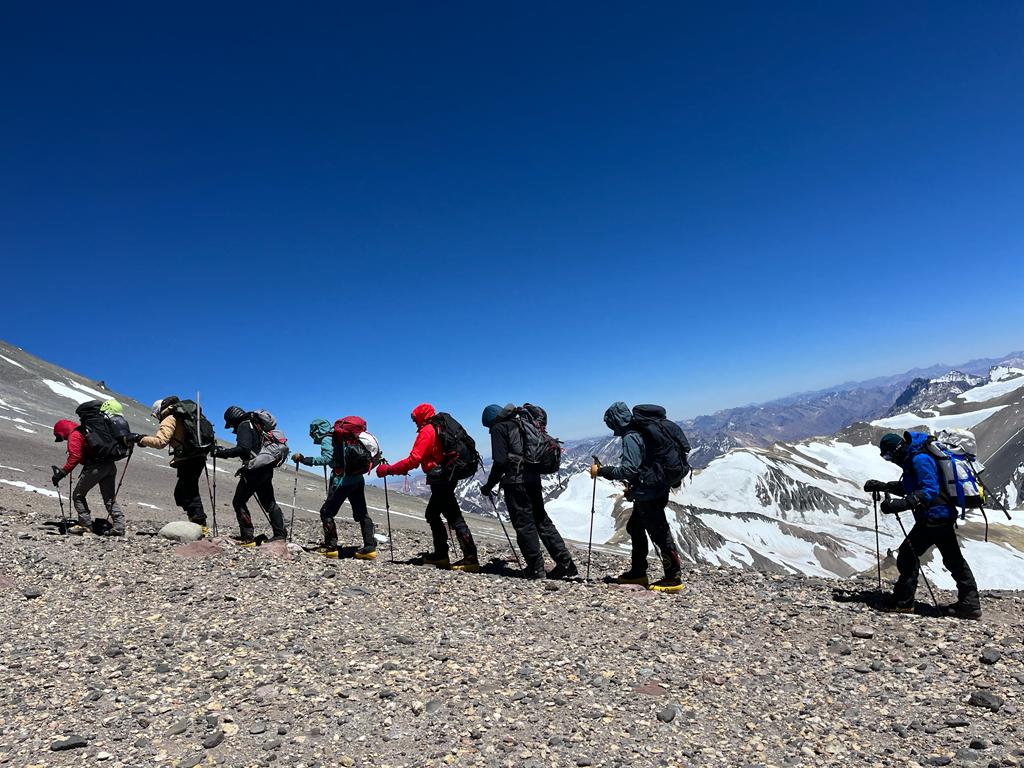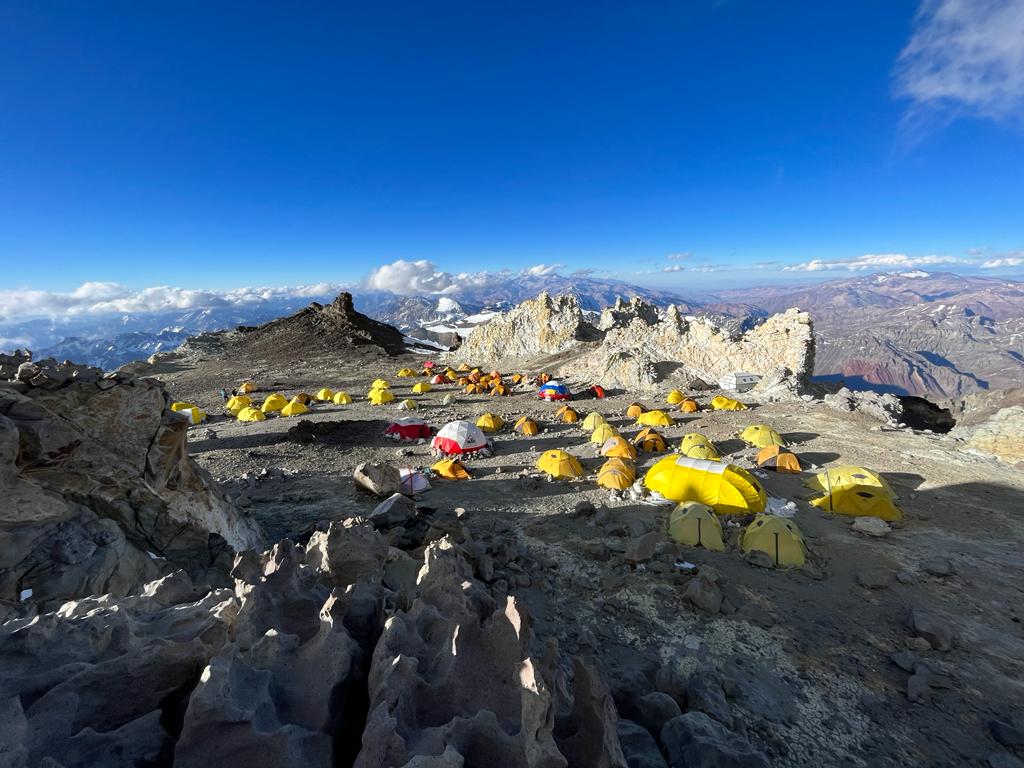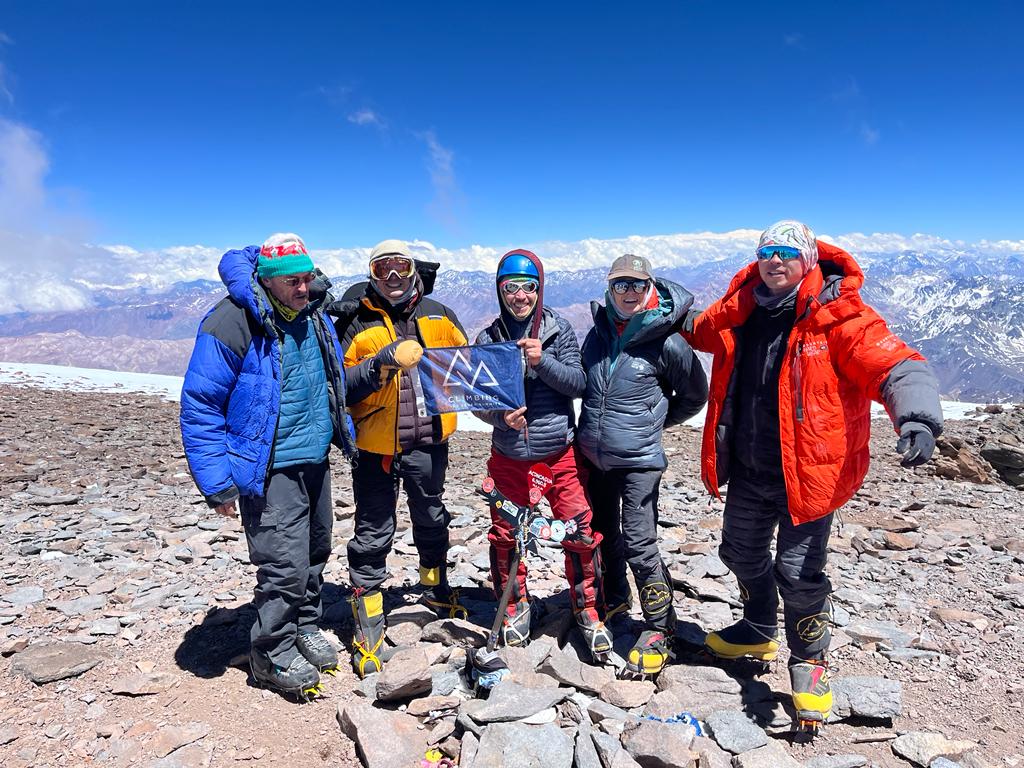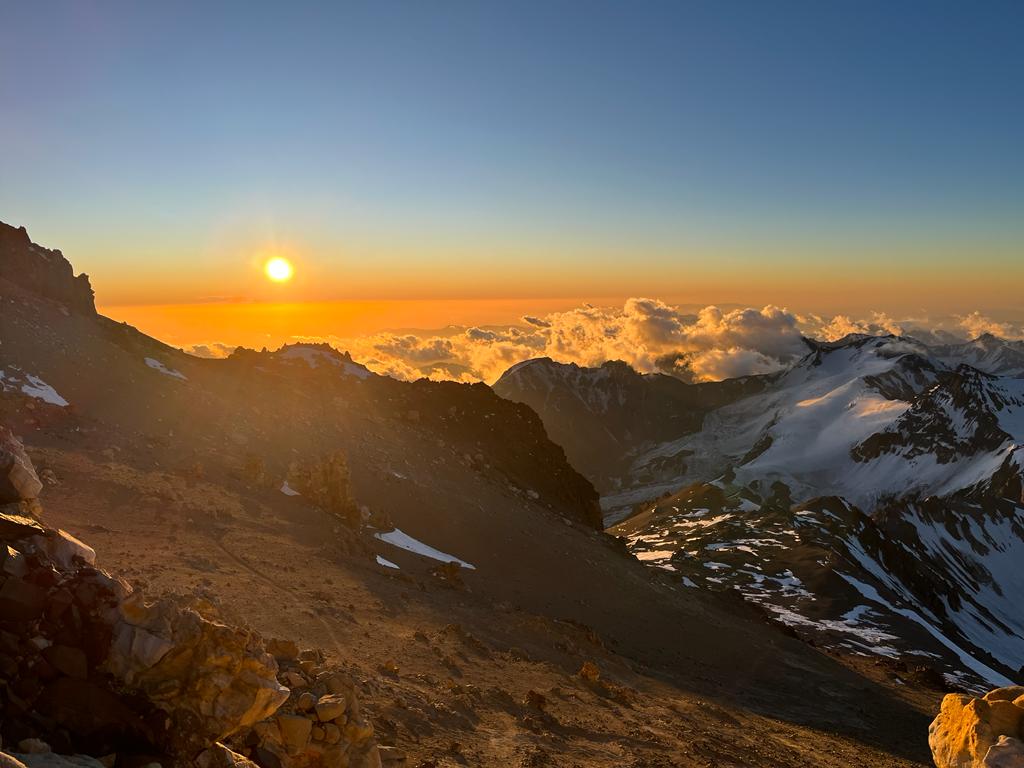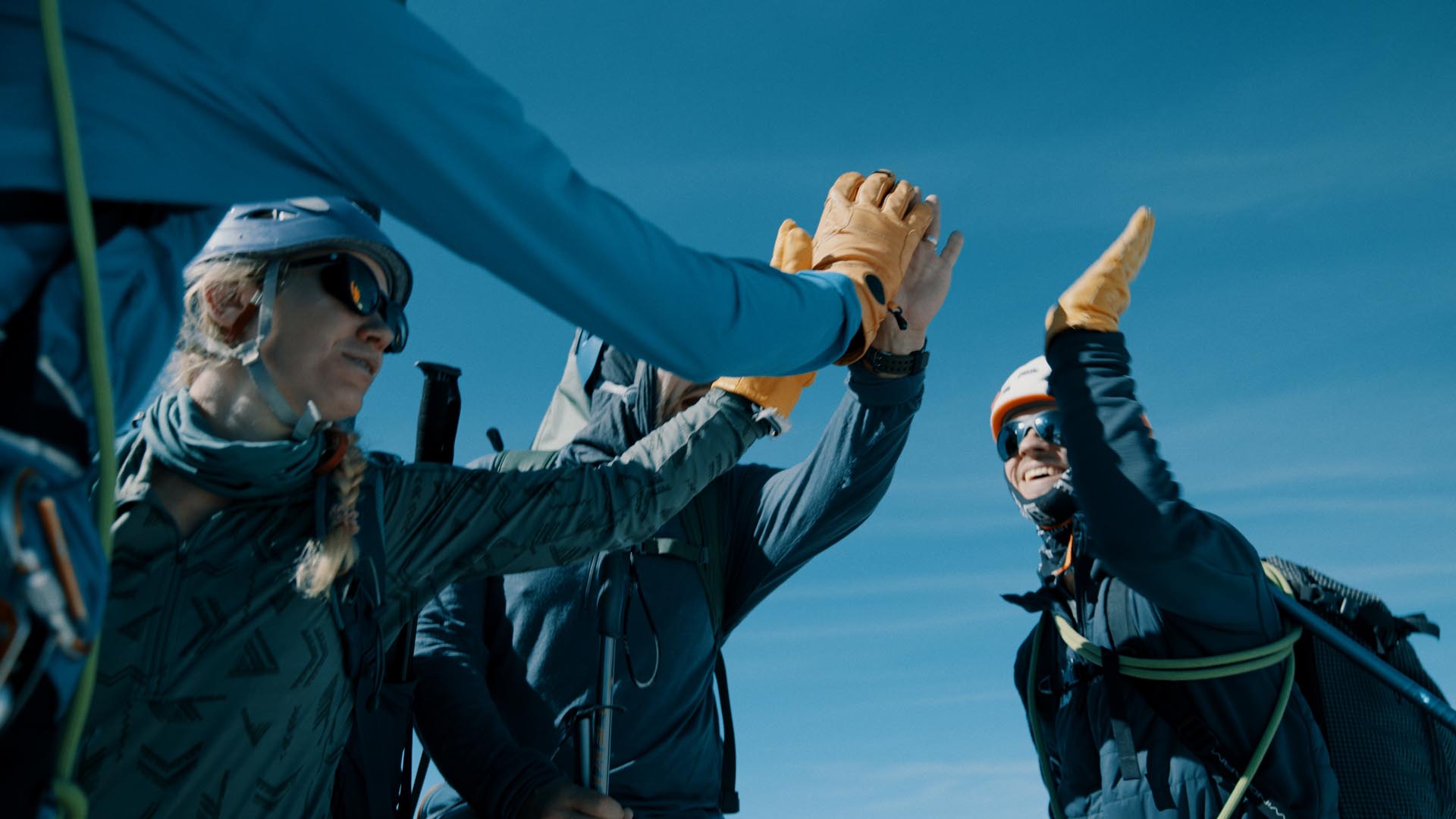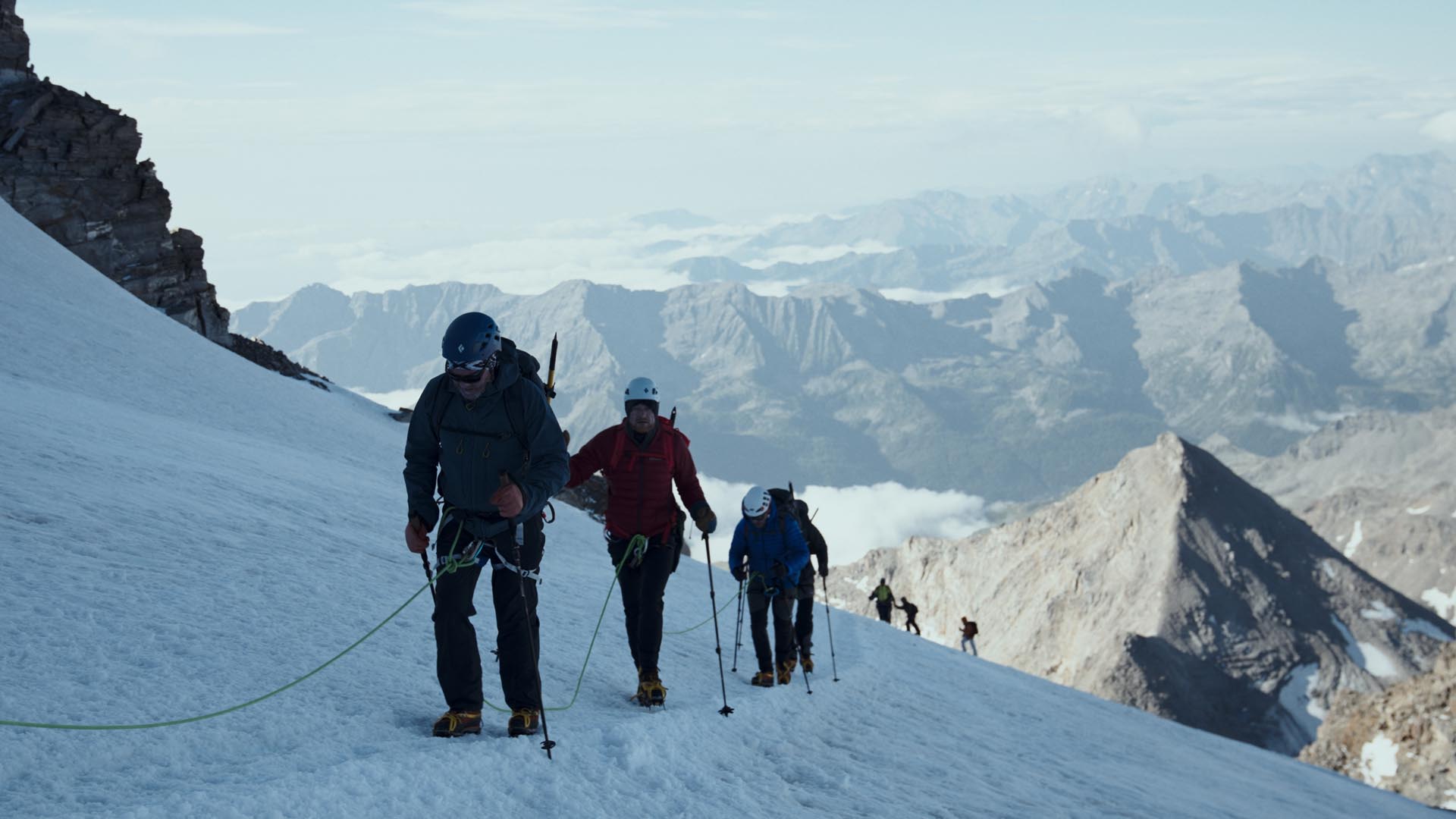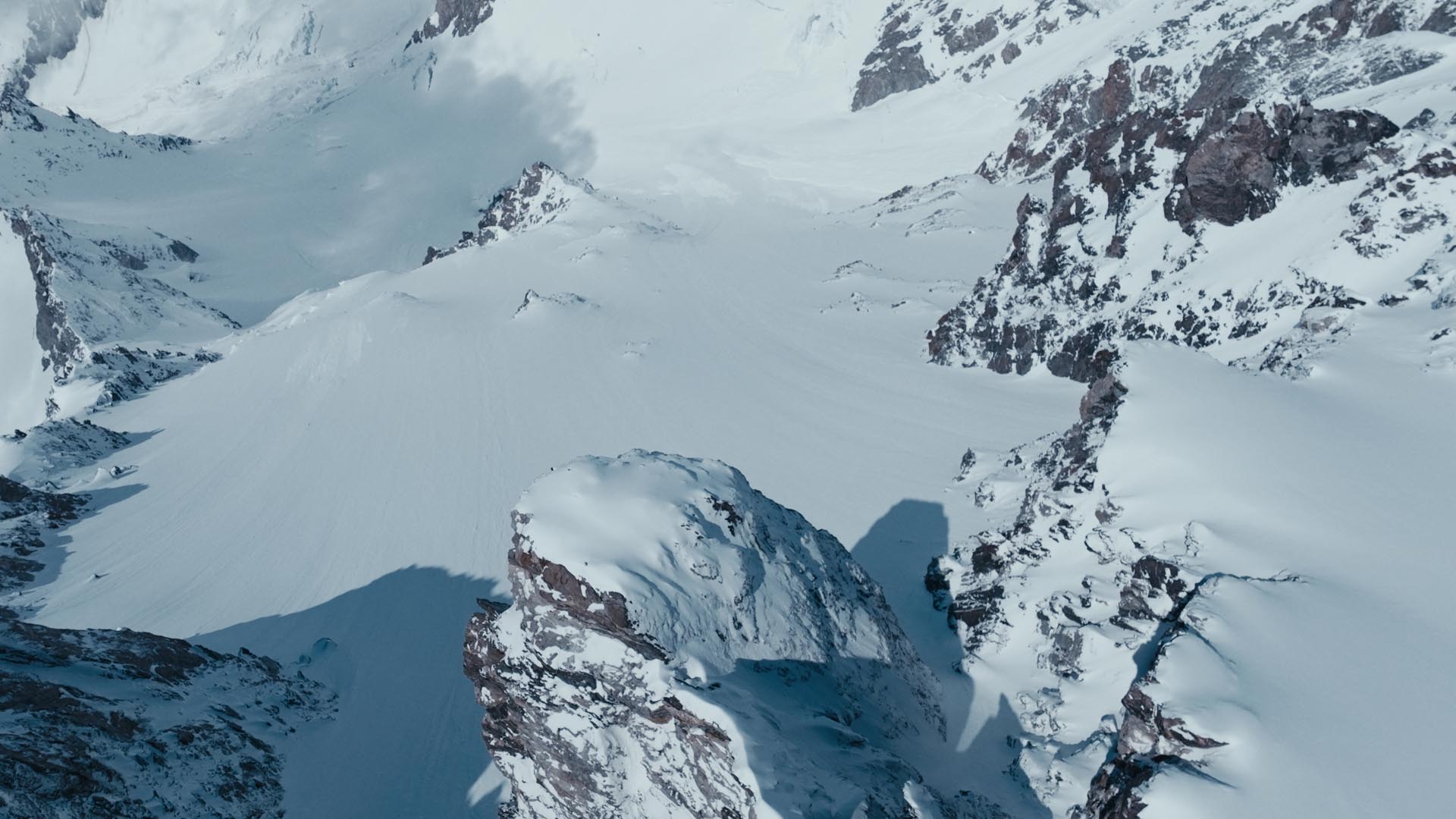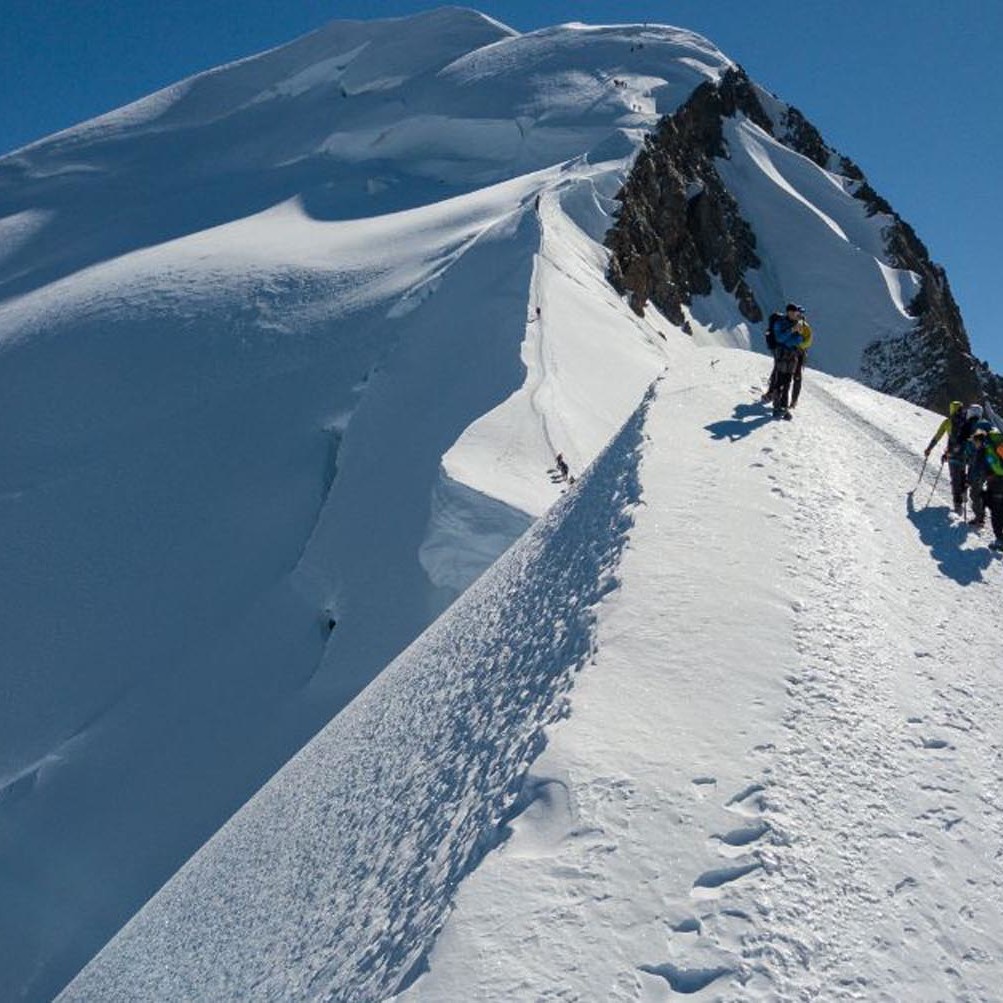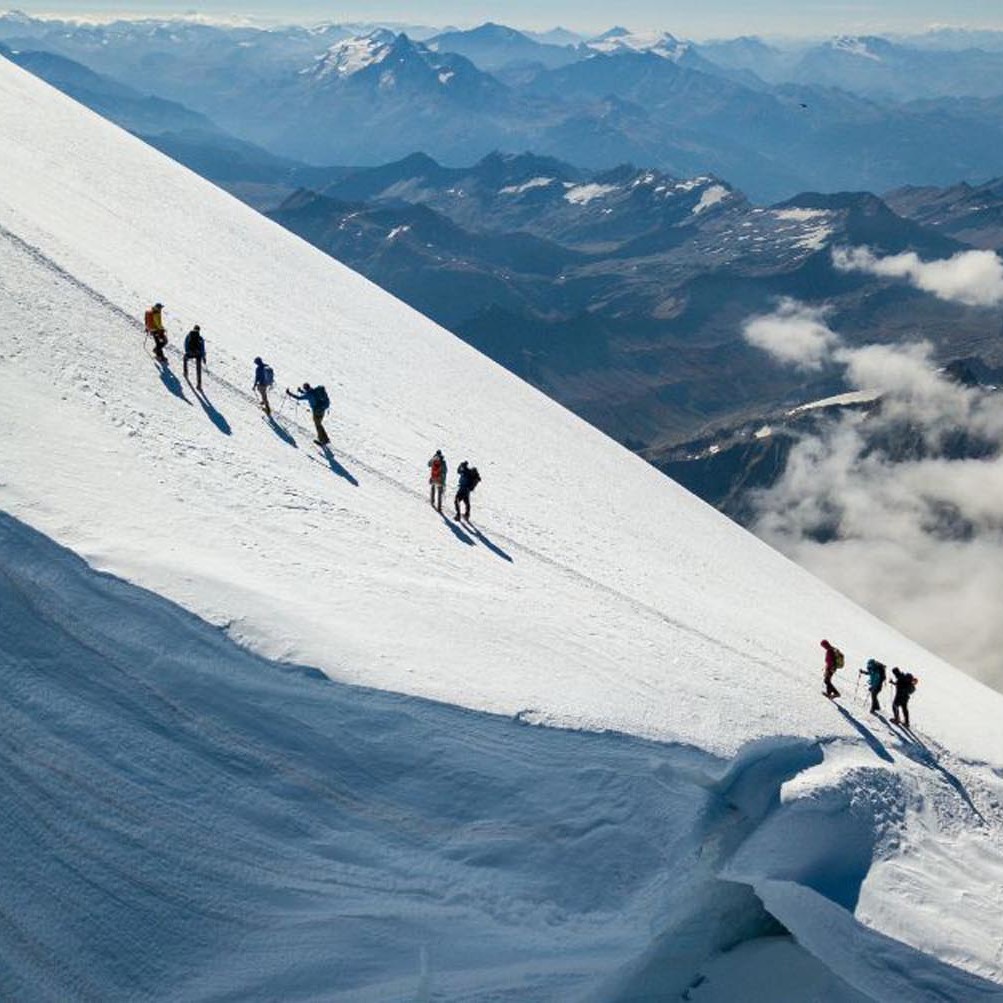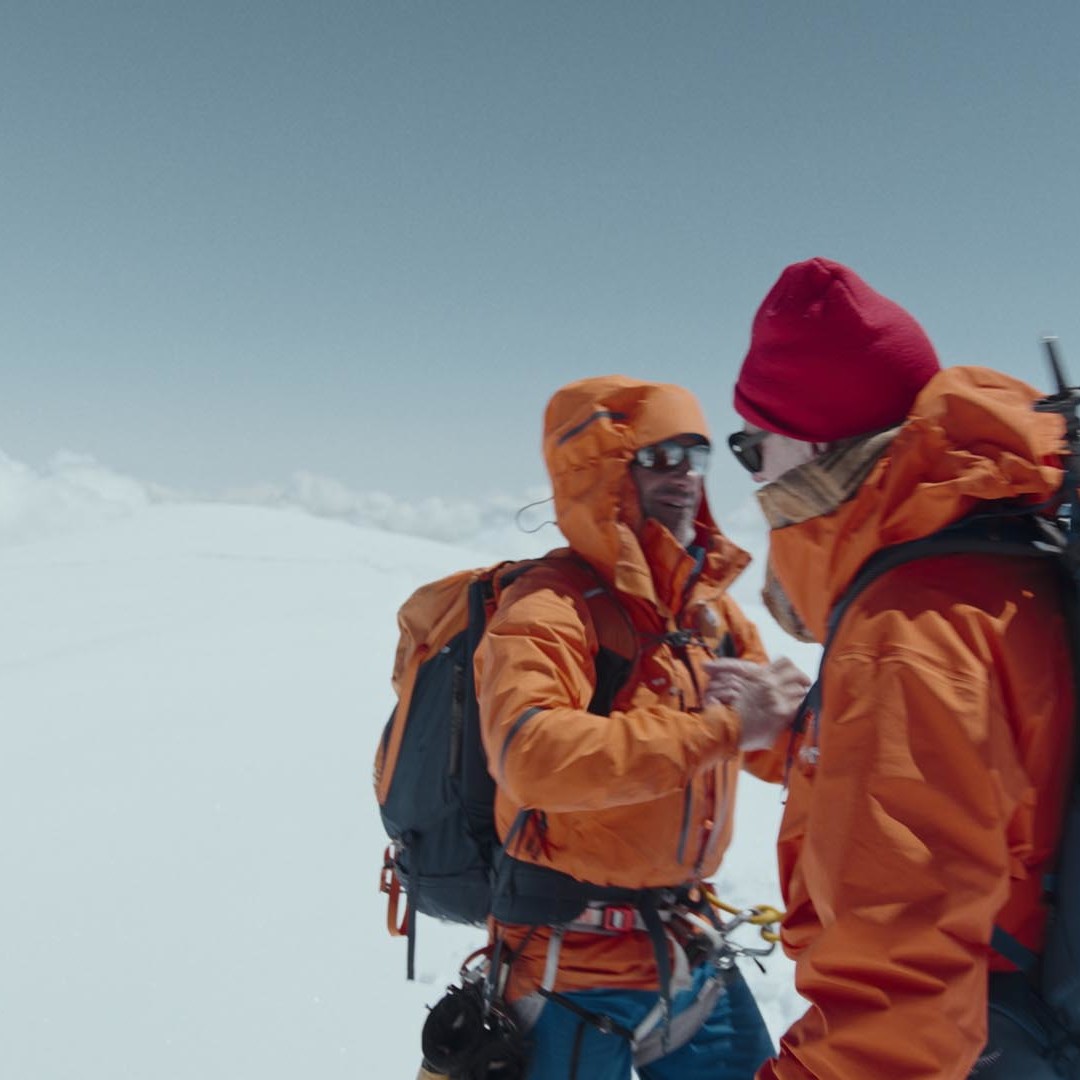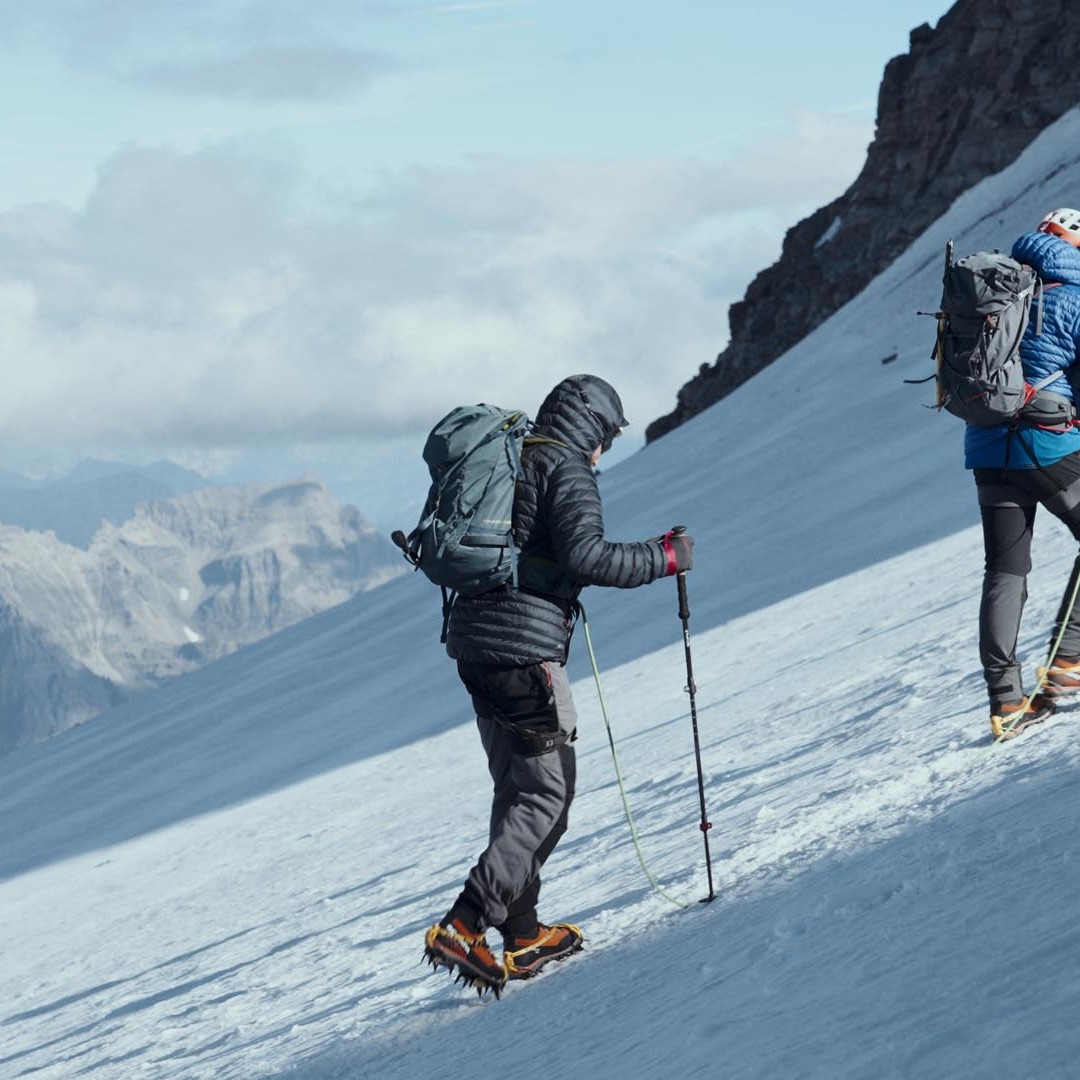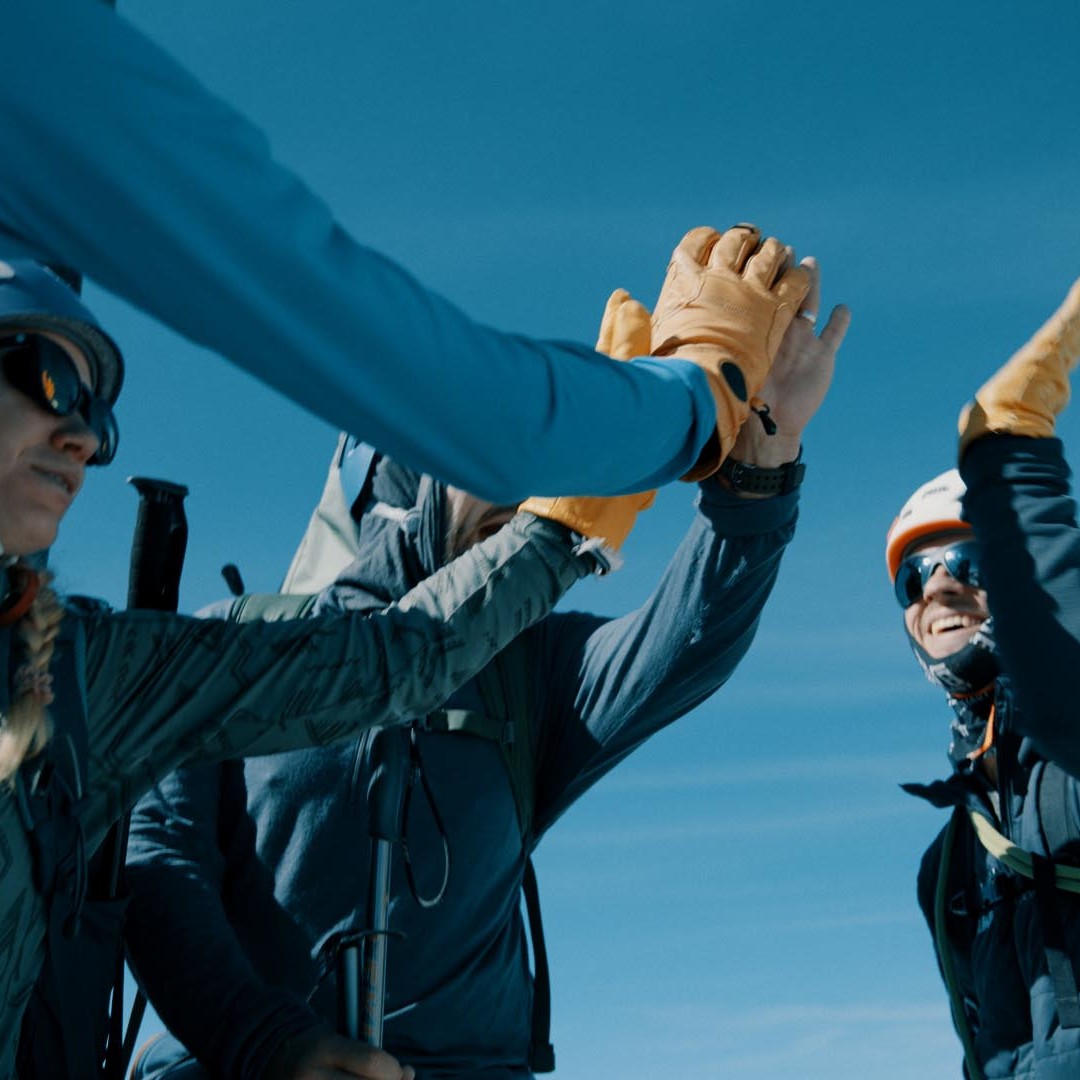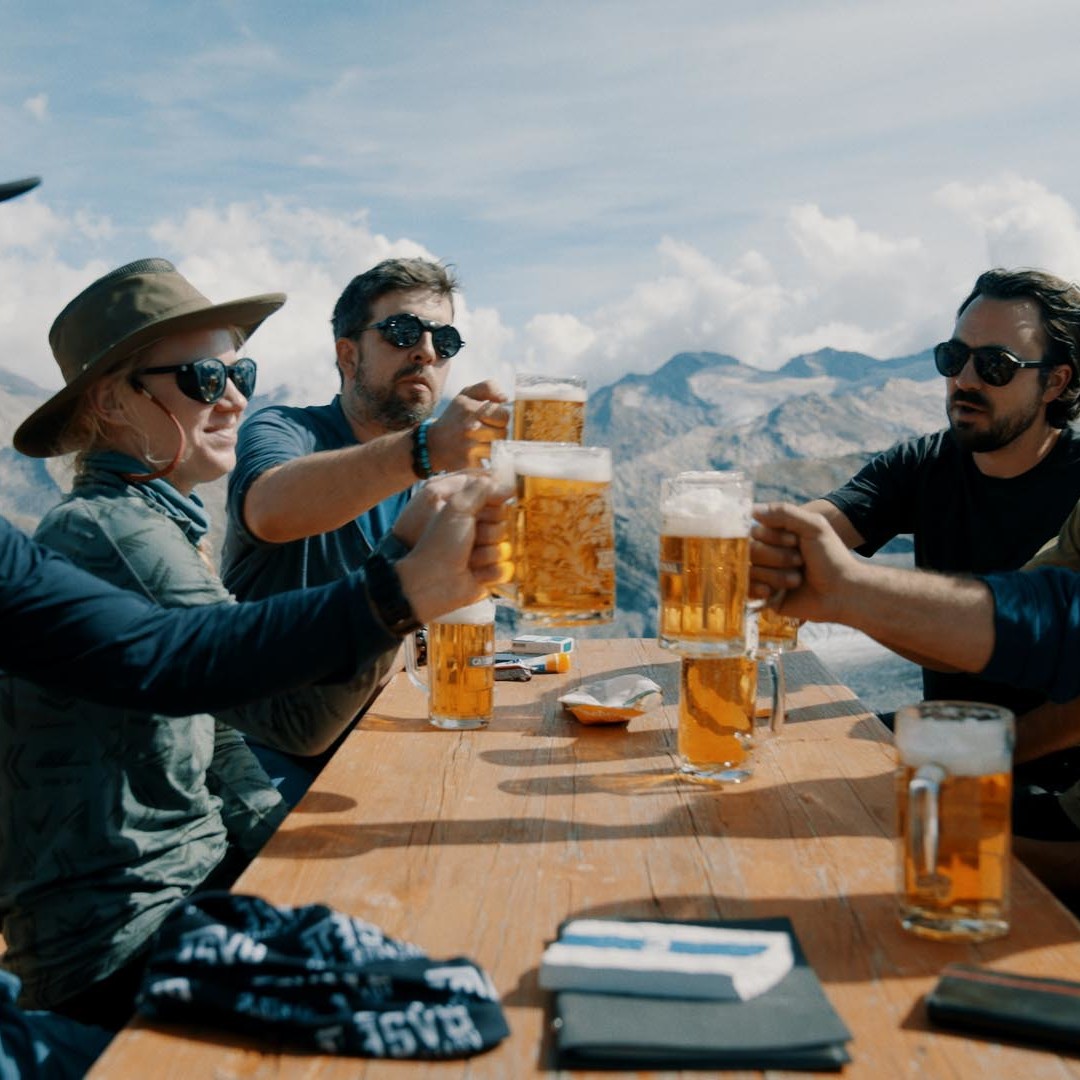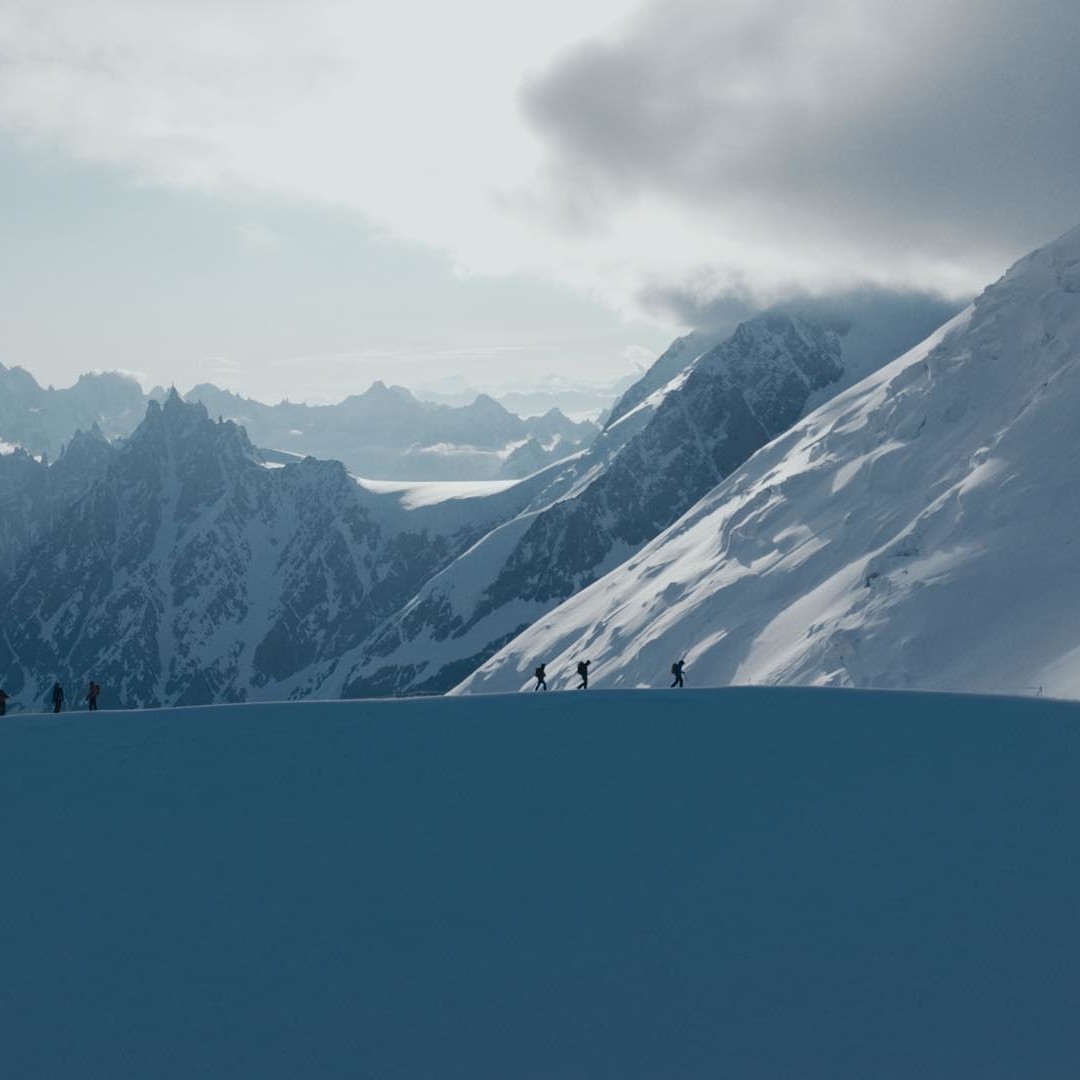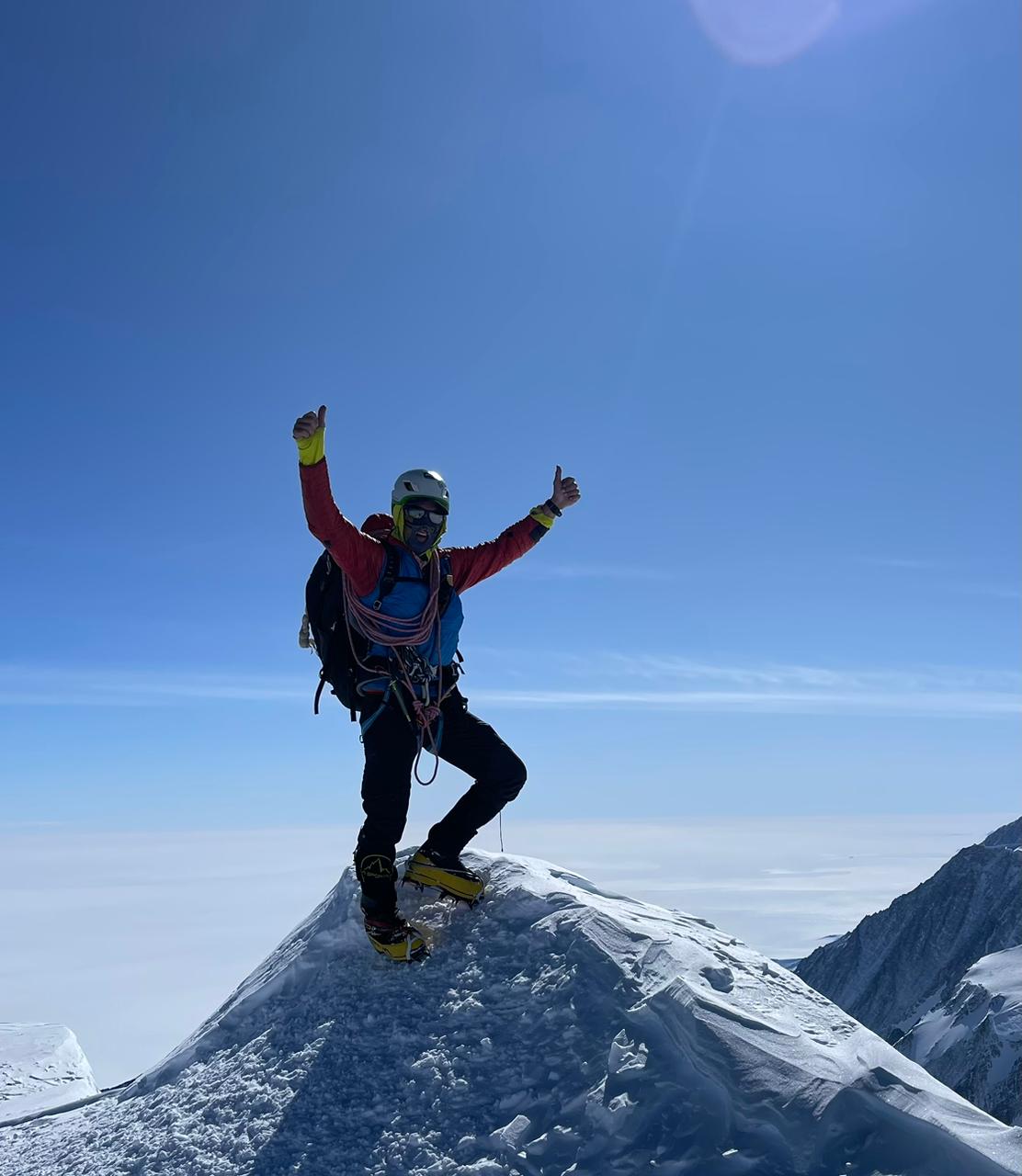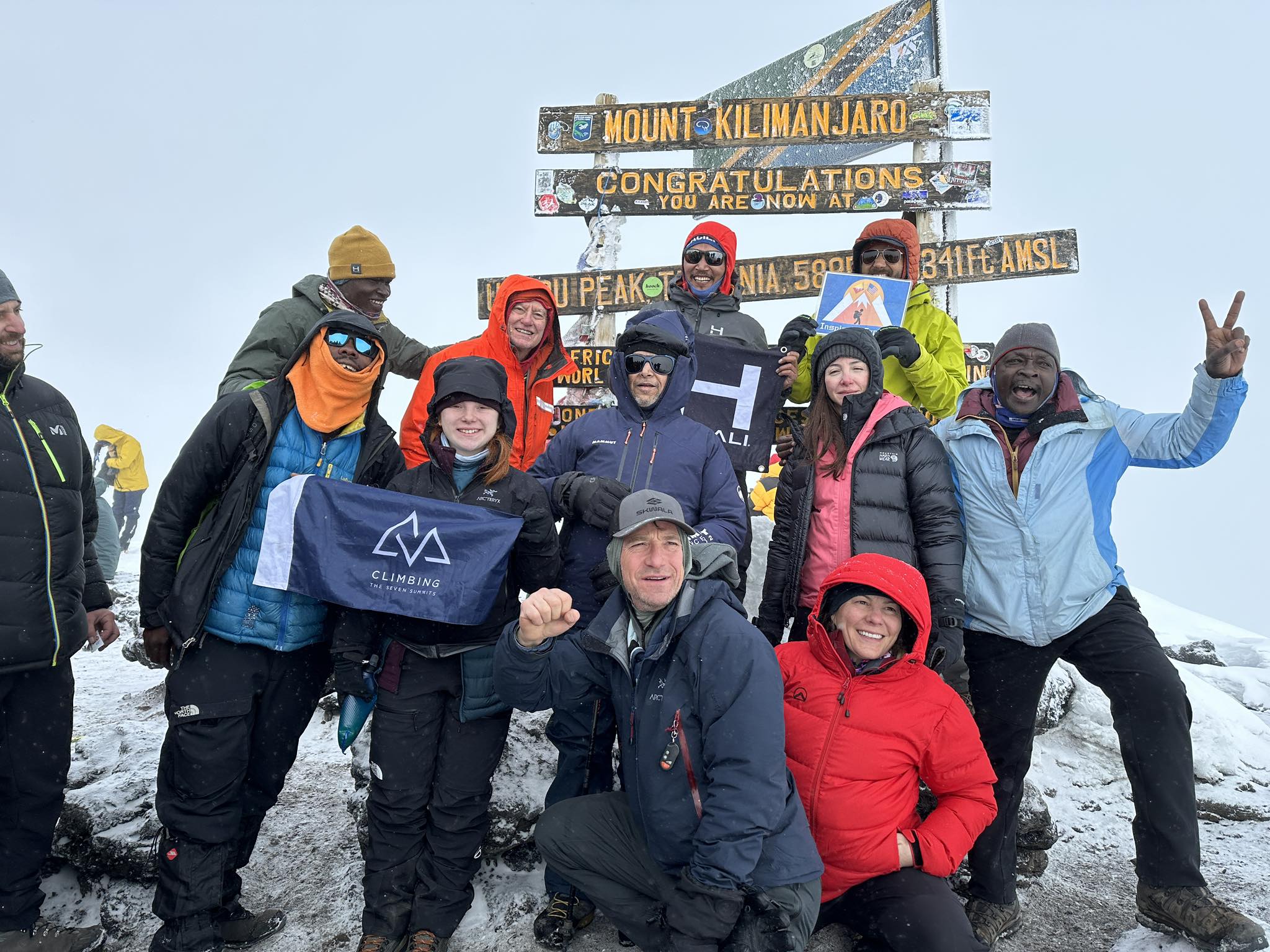How to Choose The Right Mont Blanc Expedition
How to Choose The Right Mont Blanc Expedition
Share Expedition
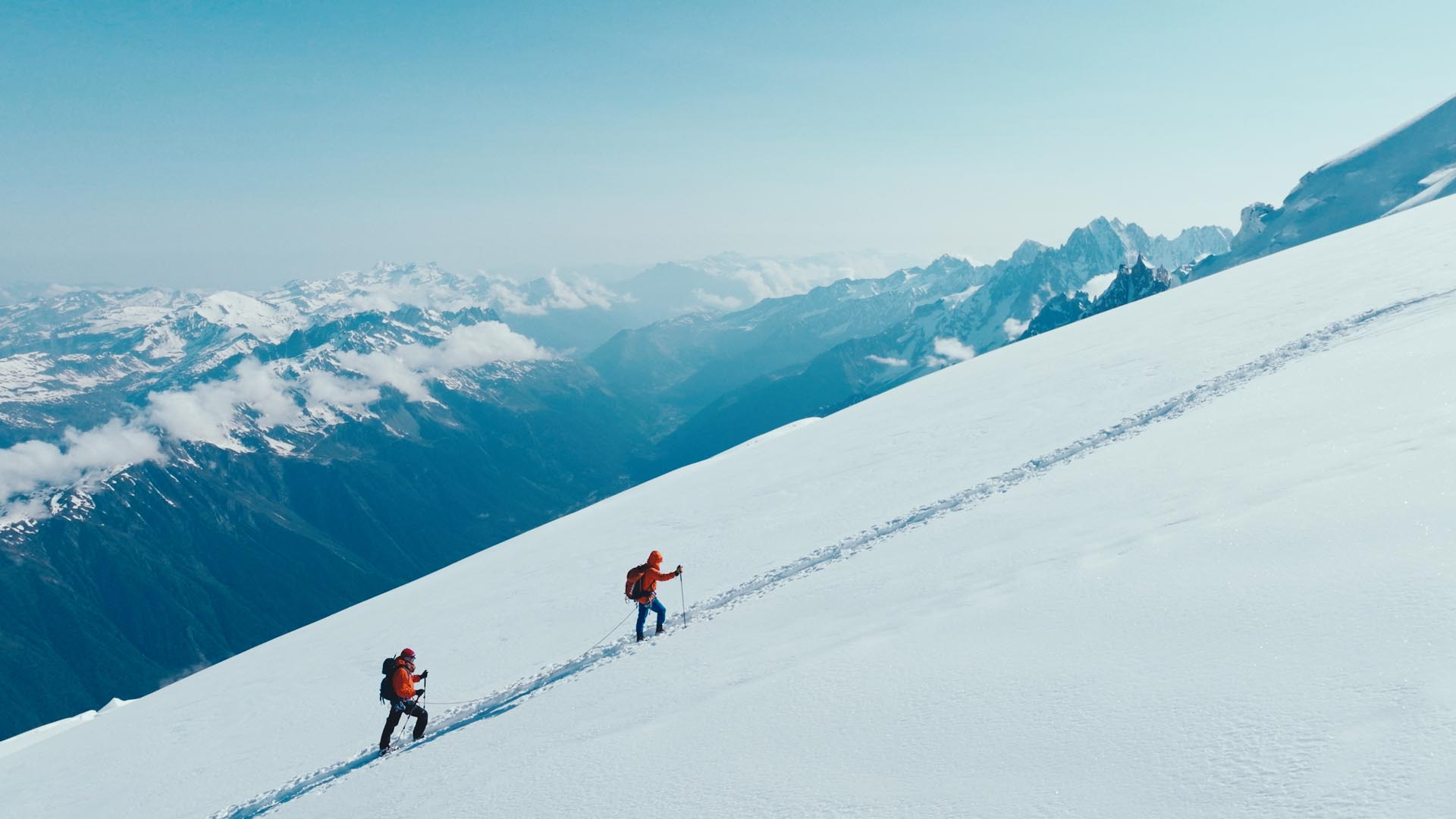
Researching and choosing the right expedition company to support you and help guide you through all logistics, as well as be there for you on the mountain is important. You want to do your homework so you feel 100% confident in your choice and can focus on the climb.
We encourage you to look closely at both the big picture and the small details. Look at a company’s priority on safety, the quality and experience of their guides, their reputation, and their level of ‘care factor’.
Safety & Success
Your safety and success are the top priorities, in that order.
A climbing company should invest heavily and plan extensively for your safety.
Mont Blanc is generally considered an approachable mountain, but that does not mean it’s free from hazards. High winds, rock fall, and whiteout conditions can exist on the mountain and at the summit of Mont Blanc. During the group dinner and gear check on the first night, the team will review the weather and mountain conditions, and your guides will make any recommendations or amendments to the itinerary
At CTSS, we ensure the safety of our climbers by employing guides with years of experience in the Alps and around the world. We design our itineraries to give our guides the ability to take advantage of weather windows and give you the best chance of success by climbing when it’s safe to climb.
Leadership
Look for guides who are seasoned experts with a strategy that is patient, conservative, and well-planned to give you the best opportunity for success. They should be adept at managing the team, able to lean on extensive experience, and “thread the needle” when it comes to picking the best summit window.
Our mountaineering guides and staff are second to none, and our teams ALWAYS include a lead guide with extensive experience on Mont Blanc. They know the area well and understand how to make your climb of Mont Blanc as smooth and successful as possible.
Skills Clinic & Training
Mont Blanc is a fantastic opportunity to learn and practice key mountaineering skills you will use throughout your entire climbing career.
CTSS dedicates a significant portion of our itinerary for training on the mountain. Your guide will also help you implement and continue to coach you in these skills throughout your climb. Some of the most important skills are often overlooked, like the rest step, pressure breathing, and pacing, among the more hands-on skills like self-arrest, efficient cramponing, and roped glacier travel.
If you are looking for a skills-based course and climb to hone your technical mountaineering skills prior to your expedition, check out our Australian Alpine Academy and Mount Baker Alpine Academy.
Values & Philosophy
Does an operator have strong values?
This is sometimes a little harder to identify as it’s more a feeling than a sales pitch, but you should get a feel for a company through their little interactions, their care factor, their attention to detail, their corporate social responsibility, and their responses to you.
Mountaineering can be high risk and stressful, so pick an operator who has strong core values and a team mentality that aligns with yours so that when things get challenging, you can rely on open lines of communication, knowing they will do what they can to support you.
It is this team cohesiveness that flows through to each individual climber and helps them stand on top.
Mont Blanc Advice from Mike Hamill
A Personal Welcome to 'Climbing the Seven Summits' Mont Blanc Expedition from Mike Hamill
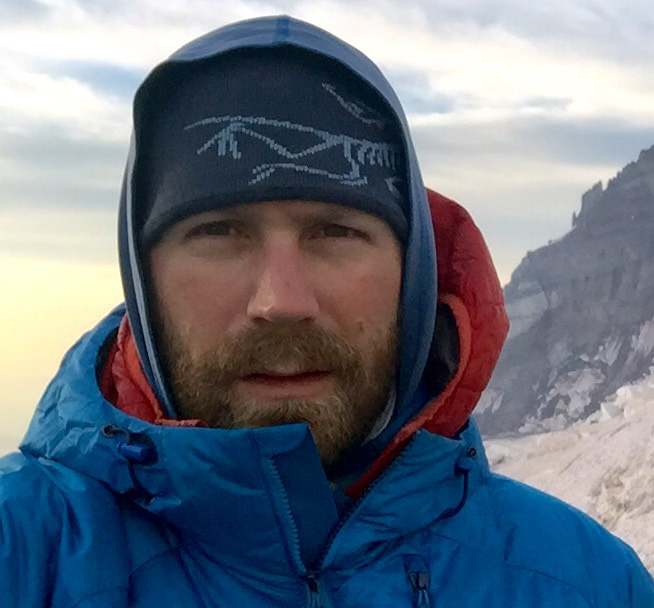
When I graduated college, I moved west as quickly as possible and took a job guiding on the mighty Mt Rainier in Washington State in the US. I was captivated by the job and lifestyle and immediately hatched a plan to spend the following spring in the center of climbing and birthplace of alpinism with some fellow guides, Chamonix-Mont Blanc. I wanted to immerse myself in climbing culture and surround myself with the best climbers and the steepest, most storied mountains on earth. In my mind, there was no better place to cut my teeth than Chamonix. I spent the next few springs ski mountaineering and climbing the mountains surrounding Chamonix Valley, and for a moment, it felt like a second home to me.
The Chamonix-Mont Blanc region has always had this je ne sais quoi allure. It captivates all who have the opportunity to climb there, specifically on Mont Blanc. It is a pilgrimage that all who call themselves mountaineers need to make at one point in their lives. Combine Mont Blanc with the Matterhorn and the Eiger, and you have ticked off the most classic climbs in the Alps all in one go! If you have the time, there is no better climbing tour of the Alps.
Beyond the history and quality of climbing on Mont Blanc, it is a perfect progression climb for the Seven Summits and a great stepping stone for other climbing programs like the Ecuador Volcanoes, 3 Peaks Nepal, and Mt Vinson. It’s also a great way to experience the best Europe has to offer, like incredible food, wine, high mountain huts, and quaint and cozy accommodations in town, not to mention aerial trams that can whisk you to wherever you want to go in the mountains and ease of travel on super-efficient trains from valley to valley. It’s an experience not to be missed.
To help you on your Mont Blanc journey, here are a few pieces of wisdom I’ve given clients over the years (and use myself!) that have helped them be successful. I hope these tips will help you, too!
Best Wishes,
Mike
- Take the opportunity to add extra time in Europe to take in the culture, especially if you haven’t been on a previous trip. Paris is a short train ride away, you can easily duck down to the coast of Italy, or even explore the Danube by boat. The sky is the limit!
- Pay close attention to the simple skills your guide teaches on day 1. like the scuff step, rest step, pacing, cramponing and self-arrest. These basic principles can cut your climbing effort almost in half; even if you are an experienced hiker, you will benefit from these techniques. They are skills you want to master early in your climbing career, and they will pay dividends in the climbs to come.
- Don’t underestimate the cold on summit day. Even in the height of summer with a perfect forecast, the upper mountain can be cold and breezy at 4 a.m. Bring winter-weight gloves and a warm parka; don’t skimp on these critical layers, thinking it’s just a summer climb.
Mont Blanc Training & Prerequisites
Experience Level

Mont Blanc is a great trip for everyone in that there are no technical prerequisites – you don’t need any prior technical mountaineering or rock-climbing experience. However, having some baseline experience with alpine and glacier climbing, cramponing, and ice axe arrest is ideal. Regardless of your experience, we will cover all the necessary skills in our 2-day training and acclimatization climbs as part of our expedition. These foundation skills are ones you will use religiously throughout your entire climbing career, making our skills training an asset to all climbers.
That said, there is a prerequisite that you are physically very fit and healthy. Mont Blanc shouldn’t be dismissed as ‘easy’ just because it is suitable for beginners. Like any large glaciated climb, it should not be underestimated.
If you are looking for a skills-based course and climb to hone your technical mountaineering skills prior to your expedition, check out our Australian Alpine Academy and Mount Baker Alpine Academy.
Physical Training
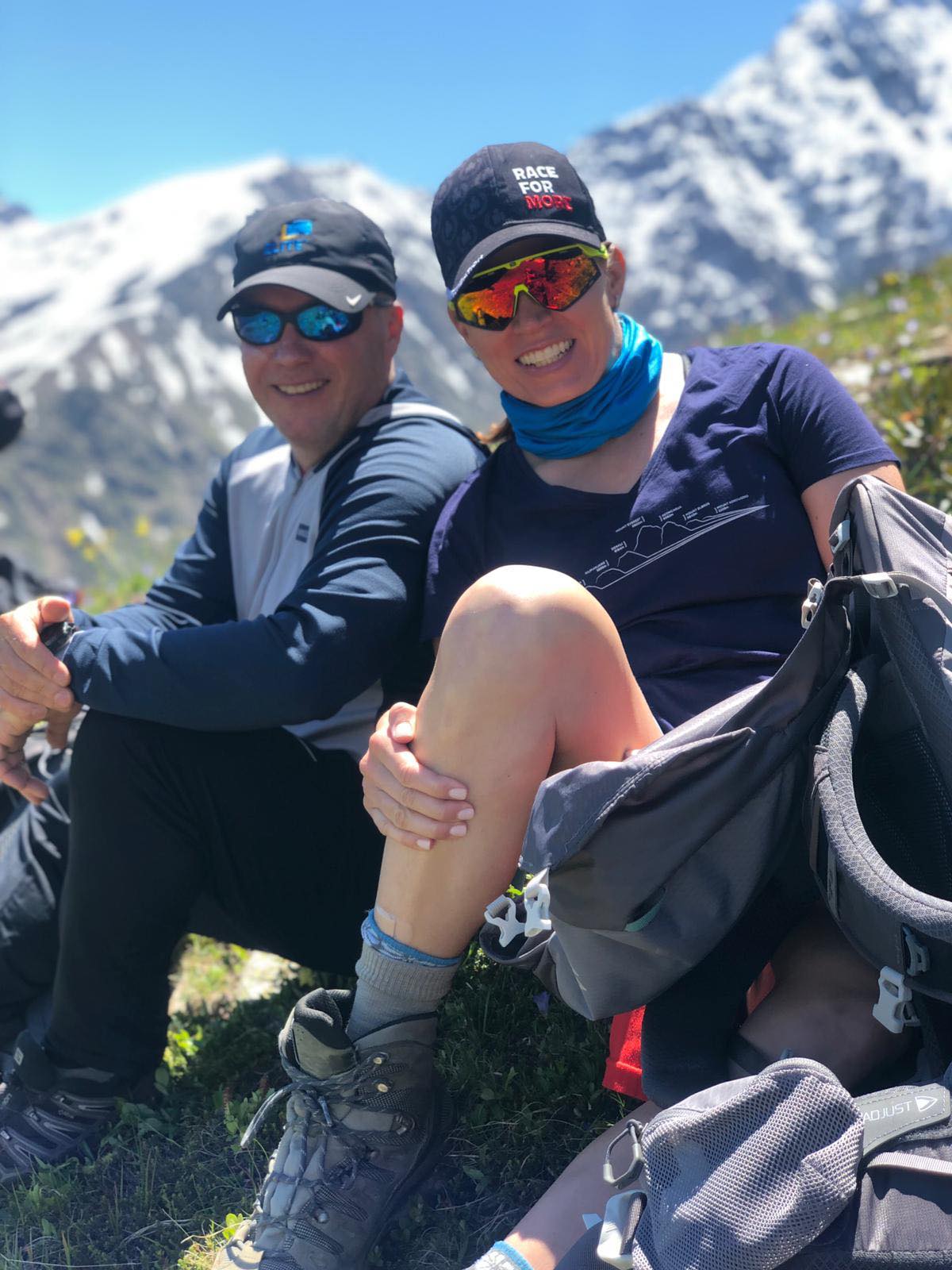
You need to be very physically fit and able to dedicate time to ‘climbing-specific training’ in the lead-up to your expedition. Being in top shape will also ensure you enjoy your climb, feel good throughout, and get the most out of the experience.
It is vital that your training closely simulates what you will be doing on the mountain. Traditional gym workouts or general fitness plans aren’t targeted enough. Instead, you need to emulate long physical days (8+ hours) in the mountains
We recommend that you:
- Start specific mountaineering training at least 3 months in advance
- Train at least 4-5 days a week for an hour or more
- Focus on high-volume but low-intensity training
- Don’t forget the cardio, strength training, and stretching.
- A good goal is to be able to comfortably climb 1,500 vertical feet per hour with a 40lb pack
- Schedule a few weekends where you can do two or more full days back-to-back. Multi-day hikes carrying a pack with good elevation gains and descents are ideal.
Mindset
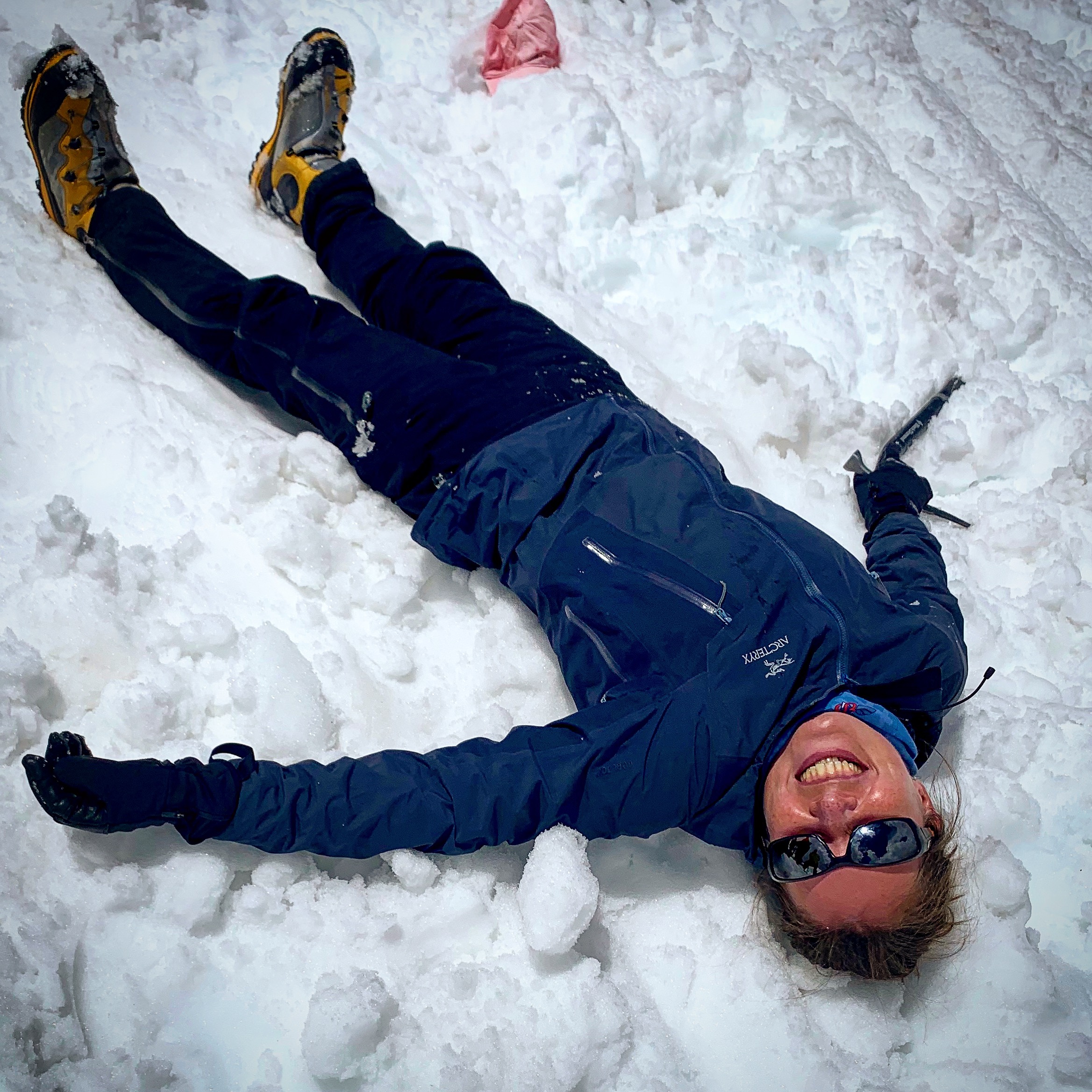
Mindset and mental preparation are integral to your success on any peak. You should be prepared:
- To be away from home/work for the duration of your climb
- Have a desire for rugged adventure travel
- Be open to receiving and deferring to guidance, support, and advice from your guides/expedition leaders (even if you are an experienced mountaineer)
- Be comfortable having open conversations with your guides
- Be able to work well in a team environment by being supportive and respectful of fellow teammates
- Be humble, respectful, and considerate even under pressure
Mont Blanc Expedition Beta & Route
Elevation: 15,774 feet
Duration: 7 Days
Continent: Europe
Country: France
Route: Goûter Route (Normal Route)
Difficulty: Intermediate
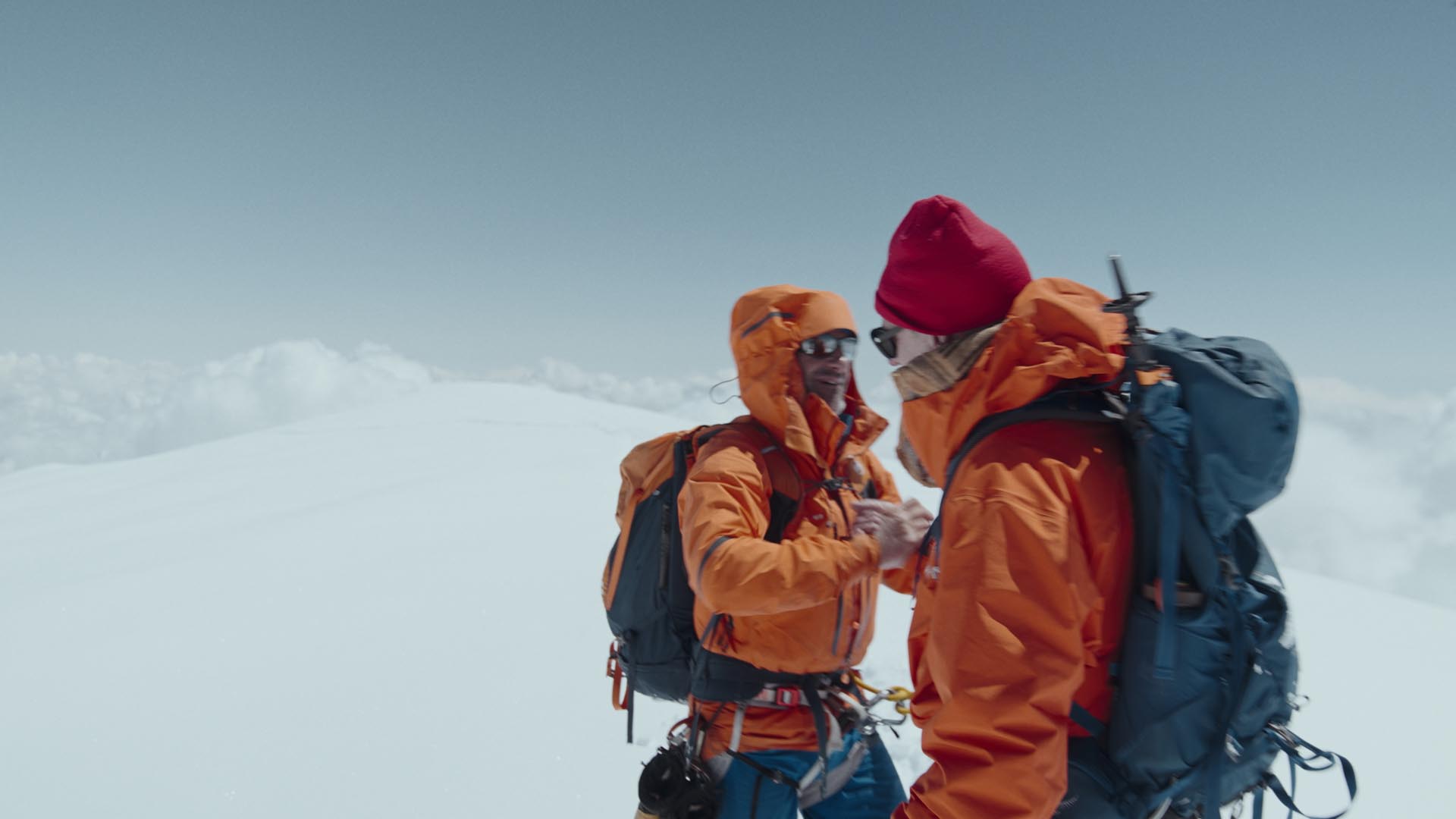
Route Choice
We have chosen the Goûter Route on Mont Blanc for the best summit chances and a chance to experience one of the “classic” climbing routes in the Alps.
Every expedition originates in Chamonix, France, the birthplace of alpinism, where the team will meet the evening before for a group dinner, gear checks, and to address any last-minute logistics.
On days 2 and 3, you will head to Mont Blanc as a team for acclimatization and technical skills training before returning to Chamonix. On day 4, you will begin your summit of Mont Blanc via the Goûter Route.
On your way to the Roof of the Alps, you will pass through the infamous Grand Couloir, a steep gully where we will pay close attention to the potential for rockfall. After, we will ascend and navigate the Aiguille du Goûter ridgeline, known for its crevasses and high winds, before approaching the Dôme du Goûter, which stands at just above 14,000 feet.
At this point, you are a little over a mile from the summit of Mont Blanc. The Dôme du Goûter is one of the shoulders of Mont Blanc and offers a perfect panoramic for the impending sunrise. Our team will make one more stop at the Vallot Hut to adjust layers and fuel up as needed before taking on the final exposed ridge, Petit Bosse, that extends to the summit of Mont Blanc.
Climbing Mont Blanc requires solid fitness, the ability to perform well with a heavy pack, and the mindset to dig deep and enjoy the process of climbing the largest mountain in Western Europe.
Mont Blanc
Mont Blanc | France
Price Range:
$6,495USD
Elevation:
15,774ft
Duration:
7 Days
Difficulty:
Intermediate
Route:
Goûter Route (Normal Route)
Share Expedition
Mont Blanc is the highest mountain in Western Europe, making it one of the most sought-after summits in the Alps and earning its spot in the Alpine Big Three along with the Matterhorn and the Eiger. Perched along the France-Italy border, this lofty summit offers climbers breathtaking views while simultaneously testing their endurance abilities and advancing their mountaineering skills on one of the most accessible peaks in the Alps.
The Goûter Route is about as classic as it gets when it comes to the Alps. This route is demanding in altitude and terrain, but it is suitable for climbers who have a strong base fitness level and are looking to advance their mountaineering skills. Climbers that are looking to learn or solidify technical mountaineering skills like cramponing, self-arrest, and fixed-line climbing will excel during this climb.
The “Big Three” in alpinism refers to three of the most iconic and challenging peaks in the Alps: the Eiger, the Matterhorn, and Mont Blanc. These mountains are renowned for their difficulty, technical climbing challenges, and historical significance in the world of mountaineering. An expedition to Mont Blanc will set you up perfectly to take on the increasingly challenging summits of the Matterhorn and the Eiger. You can add these climbs to your Mont Blanc expedition, making it the ultimate trilogy.
This expedition starts and ends in Chamonix, France – the birthplace of alpinism. Several factors have contributed to Chamonix’s status, including its proximity to Mont Blanc. The combination of challenging peaks, early exploring, alpine clubs, skilled guides, and modern-day infrastructure leaves a legacy that has become emblematic in the mountaineering and alpine world.
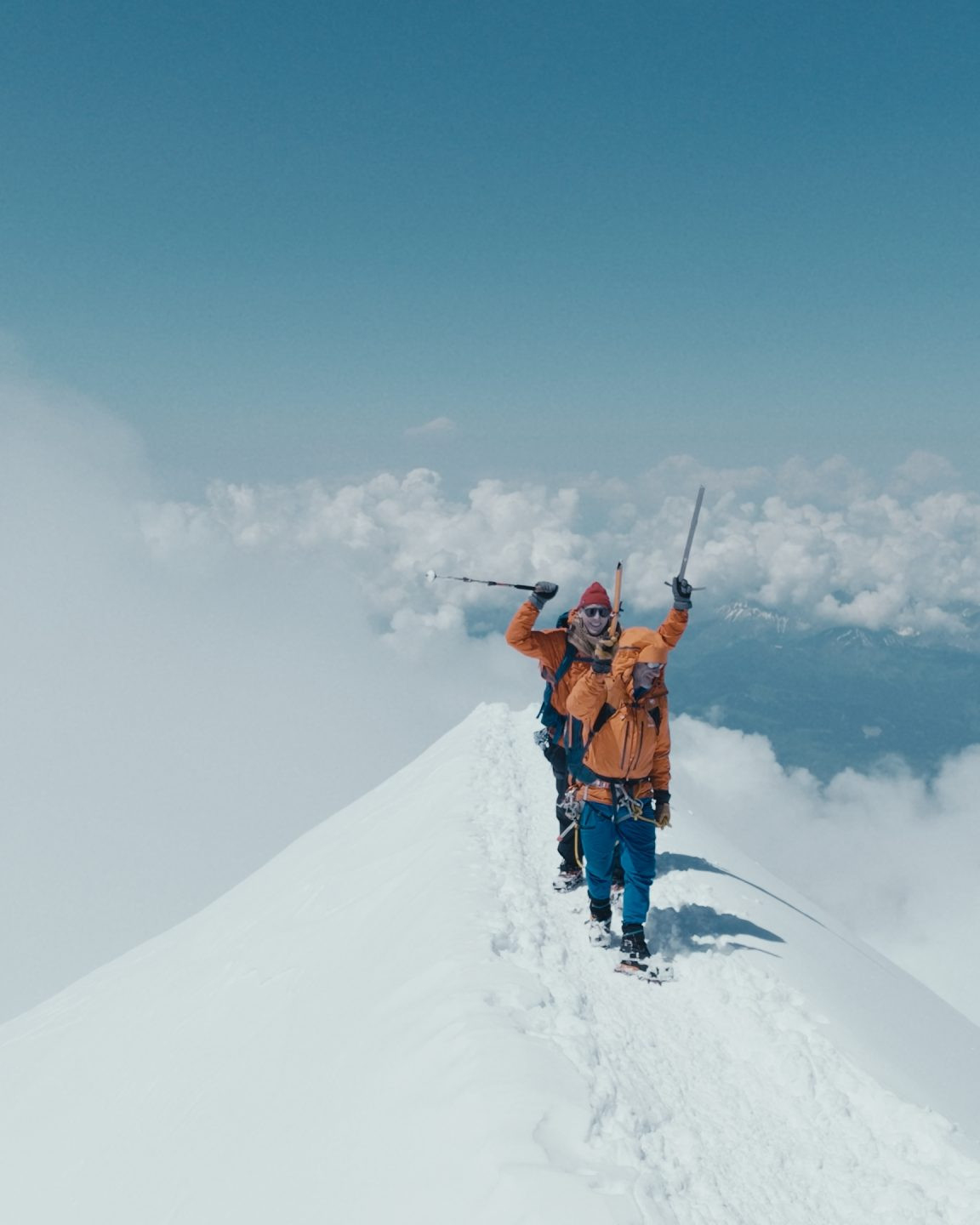
For those of you on track to complete the Seven Summits, please note that we are now recognizing Mont Blanc as the acting European Seventh Summit in place of Mount Elbrus.
For this expedition, CTSS works exclusively with Adventure Base, an authorized concessionaire based out of Chamonix, France. Mike Hamill, Owner of Climbing the Seven Summits, selected Adventure Base as our partner because of our shared philosophies and high level of standards, including logistics, professional support, and local knowledge. Together, we crafted this custom itinerary specifically for our CTSS clients, including the option to add on the Alpine Big Three. Every guide for this expedition is an IFMGA/UIAGM/UIMLA Mountain Guide and has been handpicked by our teams.
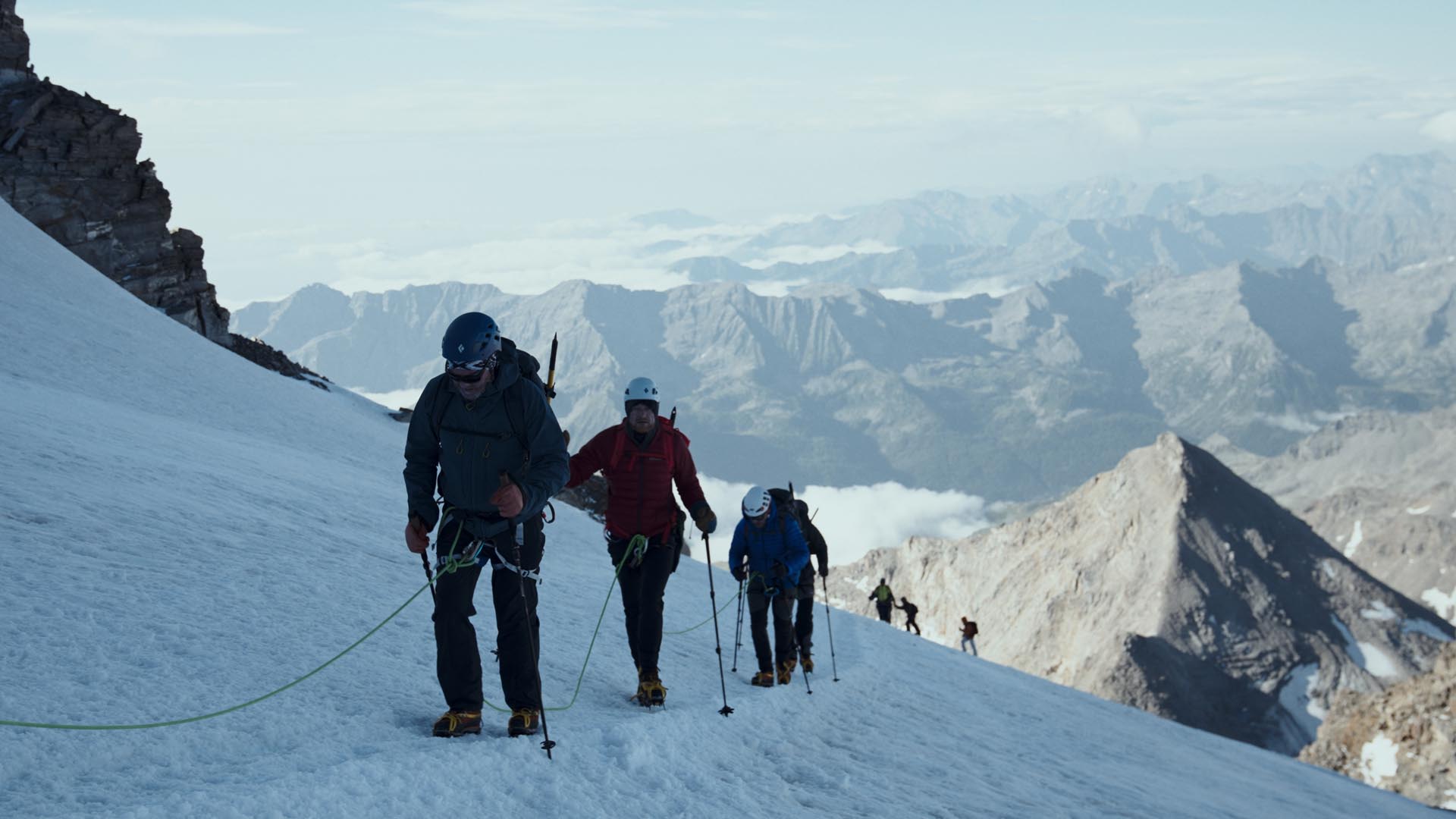
Expedition Highlights
- Stand on the highest point in Western Europe
- Advance your mountaineering skills with world-class guides
- Pair with the Matterhorn and the Eiger to complete the Alpine Big Three
- Summit Mont Blanc, now recognized by CTSS as one of the Seven Summits
- See the sunrise over the Alps from the highest point in Western Europe
- Experience life in the birthplace of alpinism: Chamonix, France
Nothing found.
Choosing the Right Option
Our Mont Blanc team climbs run in June and July for the most favorable conditions for your summit bid. You can also add on a climb of the Eiger and the Matterhorn to complete the Alpine Big Three. If you want to organize a private climb, we can arrange a custom expedition that fits your goals and timeframe, provided we receive ample notice for mountain hut booking.
Nothing found.
Allowing you to customize your expedition to suit your needs is a huge priority for us.
As mountaineers ourselves, we understand that it’s the little things that can make the difference. Comfortable, well-rested climbers are successful climbers, and climbers who have objectives that are suited to their skill level are happy climbers.
Nothing found.
CTSS works in a partnership with Adventure Base, a Chamonix-headquartered company. What does that mean for me as a climber?
It’s not uncommon for governing authorities to issue climbing concessions, or permits, to a limited number of companies with whom others then partner with for expedition logistics, etc. This is how operations work on Denali, for example, and also on Mont Blanc. Adventure Base is an authorized concessionaire for Mont Blanc and other peaks in the Alps.
CTSS owner Mike Hamill has worked directly with the ownership of Adventure Base to design a bespoke Climbing the Seven Summits itinerary for the trip and has chosen them as our partner because of our shared philosophies and high standards, particularly when it comes to logistics, professional support, and local knowledge.
How does the CTSS itinerary differ from others offered directly by Adventure Base?
- Standard Adventure Base itineraries climb Gran Paradiso, whereas CTSS has specifically chosen Aiguille du Midi/Mer de Glace and Punta Hellbronner for our training days. These peaks offer a much nicer experience and a far superior training ground for making certain team members have the opportunity to practice and feel confident in their mountaineering fundamentals before heading to Mont Blanc.
- The CTSS itinerary offers a two-day summit window, while standard Adventure Base itineraries provide only a single day. This allows for contingencies like weather or additional acclimatization while still giving climbers the best chance possible to tag the summit. We find this larger summit window advantageous, as it often saves people from needing to make a return trip to try again—especially if they’re pursuing the Seven Summits!
- All meals, from dinner on the first night through breakfast on the final day, are included in the CTSS itinerary, whereas standard Adventure Base climbs include only breakfast in the hotel and/or mountain hut.
- Similarly, all transfers are included in your Climbing the Seven Summits Mont Blanc program fees. This includes round-trip transport from Geneva Airport to the team hotel in Chamonix, transit within the itinerary, and uplift and Tramway du Mont Blanc tickets.
What will summit day be like?
On summit day, we wake up early and ascend to the summit of Mont Blanc. This will take between 8 and 10 hours, depending on conditions. On the descent from the summit, we spend the night in the Goûter Hut (3,813m). This second night in the Goûter Hut means we are less in a rush to make it down to the valley or the Tête Rousse Hut, and that we cross the Grand Couloir early the following day. These are all carefully considered factors that we’ve analyzed over many years, guiding this route to maximize your chance of a successful summit.
Are private climbs available on Mont Blanc?
If our team climb dates don’t work for your schedule, or you would simply prefer a private trip experience, we also build custom itineraries for many of our climbers. Please note, private expeditions on Mont Blanc need to be booked no later than mid-November to ensure hut space on the mountain.
Do I need to have any prior climbing experience?
This trip is open to all individuals in good physical condition. There are no technical climbing prerequisites to join this program. However, having some baseline experience with alpine and glacier climbing, cramponing, and ice axe arrest is ideal. If you are looking for a skills-based course and climb to hone your technical mountaineering skills prior to your expedition, check out our Australian Alpine Academy and Mount Baker Alpine Academy.
What is a good fitness and training program for this climb?
- Climbing conditioning – pack-loaded uphill hiking, walking, and stair climbing
- Strength training – for the lower and upper body
- Cardiovascular training – including both aerobic and anaerobic workouts without pack weight
- Flexibility training
How does this fit into my climbing progression?
Mont Blanc is a great training peak for bigger expeditions like our 3 Peaks Nepal (Lobuche, Pokalde, and Island Peak) and Ecuador Volcanoes Climb (Cayembe and Cotopaxi). Many climbers compare Mont Blanc to Mount Rainier in North America in terms of training and preparation.
If you are progressing through all the Seven Summits, this would be an excellent expedition to complete after you’ve climbed Mount Kilimanjaro and Mount Kosciuszko to prepare yourself for bigger objectives like Denali and Aconcagua.
Do I need to acclimatize due to altitude?
Yes, we have built in two training days to support acclimatization into this expedition.
How heavy will my pack be?
You will likely be carrying 15 – 25 lbs (5kg – 10kg) in a 30 to 40 L pack.
Will I need to purchase trip insurance?
Yes. Trip delay and cancellation, rescue, repatriation, and medical insurance are mandatory for this program for your own benefit. We have seen too many times people need to cancel their trip either before or during the expedition for reasons such as injury, health, family, and business matters. With such a long trip and so much at stake, climbers need to be prepared for contingencies.
Didn't find an answer to your question? Don't hesitate to ask us.
At CTSS, we believe your expedition starts long before you reach the mountain.
That’s why we provide every climber with holistic, personalized pre-expedition support, no matter the objective.
When you join a CTSS expedition, you become part of the family. You’ll be paired with a dedicated Expedition Manager and backed by our full team of experts, with guidance on everything from personalized strategy and progression planning to gear selection, training, travel logistics, and insider tips to help you get the most out of your climbing journey.
We’re here to make sure you show up prepared, confident, and ready to thrive on the mountain and beyond.
6x Reasons to Choose CTSS
Safety
Your safety and success are our top priorities, in that order. We make conservative decisions, plan redundancies, and all our guides have wilderness medical training, safety and rescue plans, and access to doctors around the clock to help keep you safe.
Value for $
We keep our overheads low to pass savings on to you. We are proud to offer the best service at the most competitive price, without compromising on safety or taking shortcuts in logistics, staffing, or infrastructure.
Holistic Approach
Our service goes far beyond the mountain. Think of us as your climbing coach; we'll be there from start to finish to prepare, debrief, and plan your progression as a mountaineer, whether your goal is a single summit or the Seven Summits.
Guides & Team
Guides can make or break your climb. We hand-pick the most qualified, tenured, tested, and personable guides and Sherpas in the world. Owner and mountaineer Mike Hamill personally oversees the logistics and management of each expedition.
Our Values
We care about you, our people, and the planet. A portion of every expedition goes to the Tiger of the Snows Fund, supporting outdoor tourism workers and their families. We follow strict Leave No Trace principles and live by our No D*ckheads Policy, because who you climb with matters.
Success
We have an unparalleled summit success rate. How? We do it in a myriad of ways; like a great chef's secret sauce, we've fine-tuned the recipe over decades. Most importantly, we believe in you & your ability to achieve your goals, and we are invested in putting you on top.
Ready to Progress?
Consider these expeditions
Mont Blanc Inquiry Form
Vinson Summits!
Our Vinson Team just topped out!
Huge congratulations to;
Mr Kevin Cagney - who is finishing his 7 Summits!
Mr Ryan O'Sullivan - who is finishing his 7 Summits!
Ms Sophie Lavaud
Mr Ed Richards/
Mr Dean Poulakidas
Mr Brett Bush
Everyone is back to High Camp now and resting while the Guides get dinner rolling.
They will drop back to Base Camp tomorrow.
Cheers
CTSS Team
Photo CTSS Vinson Archives
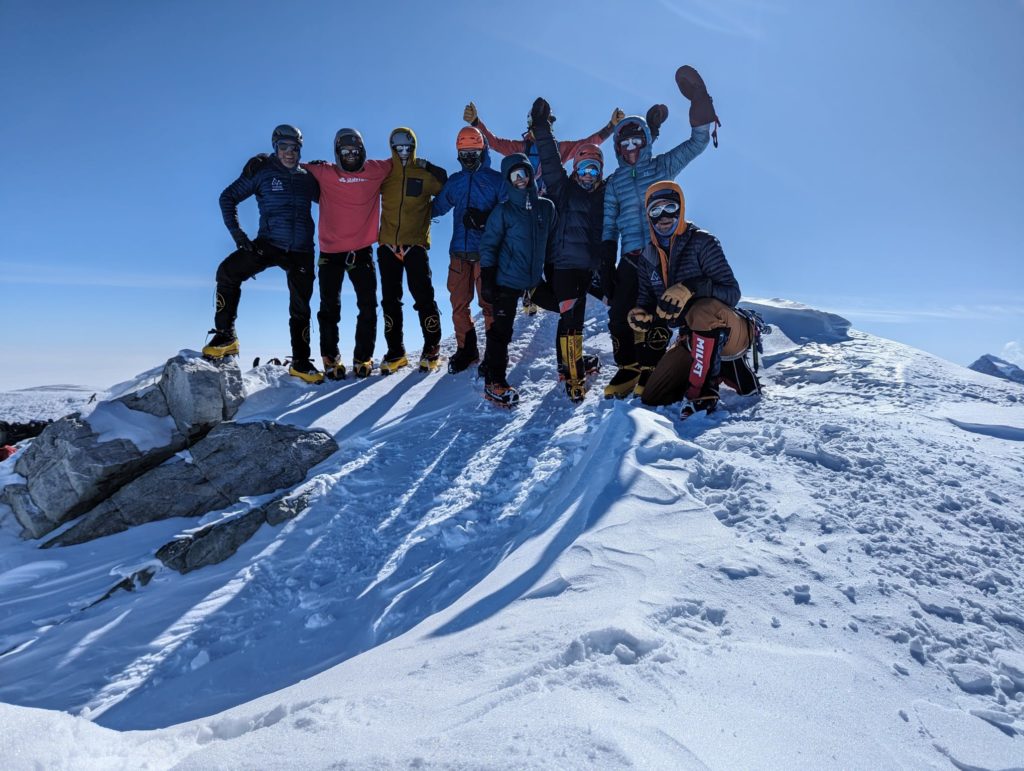
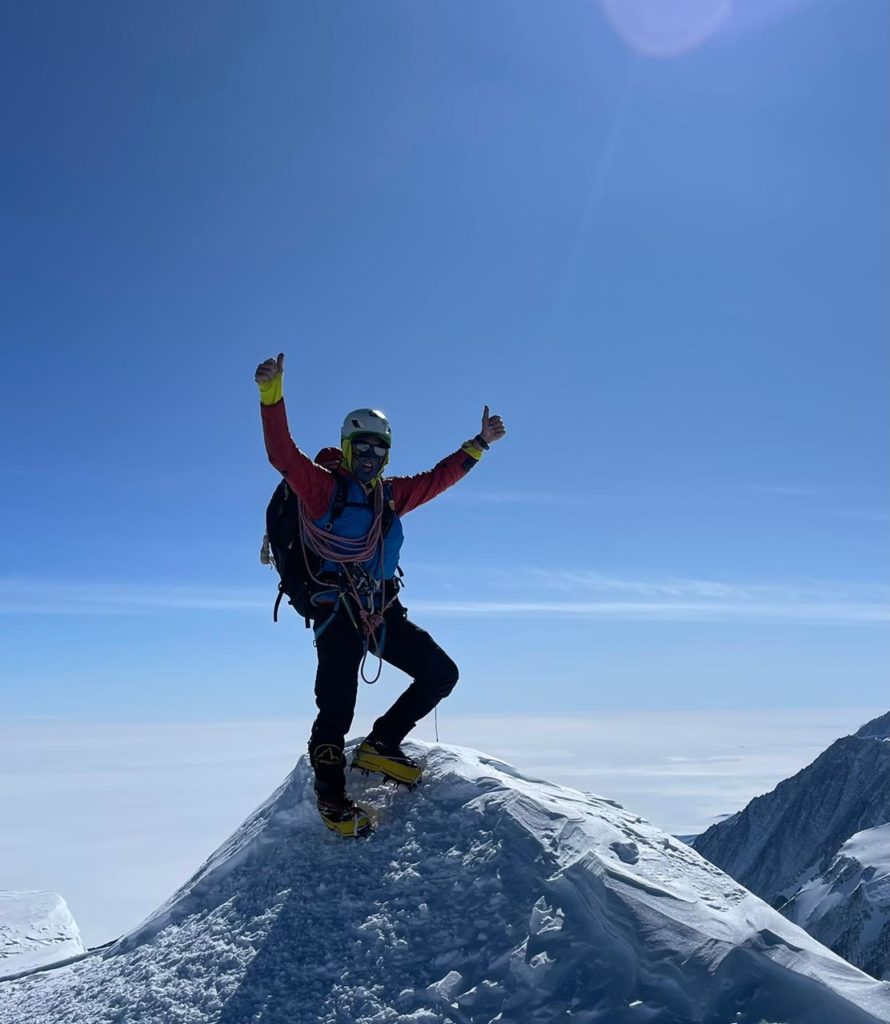
Vinson Team in Position for Summit
We hope you had a great weekend.
7th Jan: Our Vinson Team are at High Camp, enjoyed a well deserved rest day today. With more cloud cover forming around the higher peaks in the early afternoon, than originally forecast it's a good day to take a break. They will aim for the summit tomorrow which will mean falling out of camp sometime between 8am - 10am, expecting a 6-8hour climb up and half of that back down to High Camp. Wishing them luck.
Meanwhile our final Vinson team arrived into Punta Arenas today. They will meet tomorrow morning for gear checks and guide briefing.
All is well down South.
Cheers
CTSS Team.
Photos from CTSS Vinson Archive
![]()
![]()
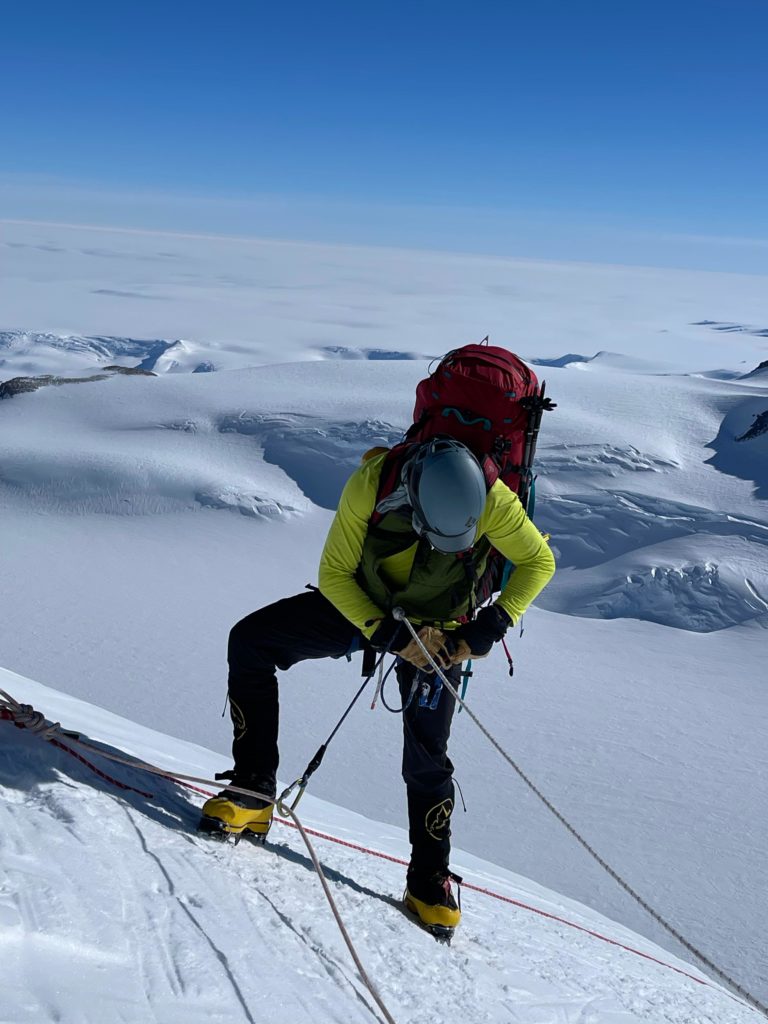
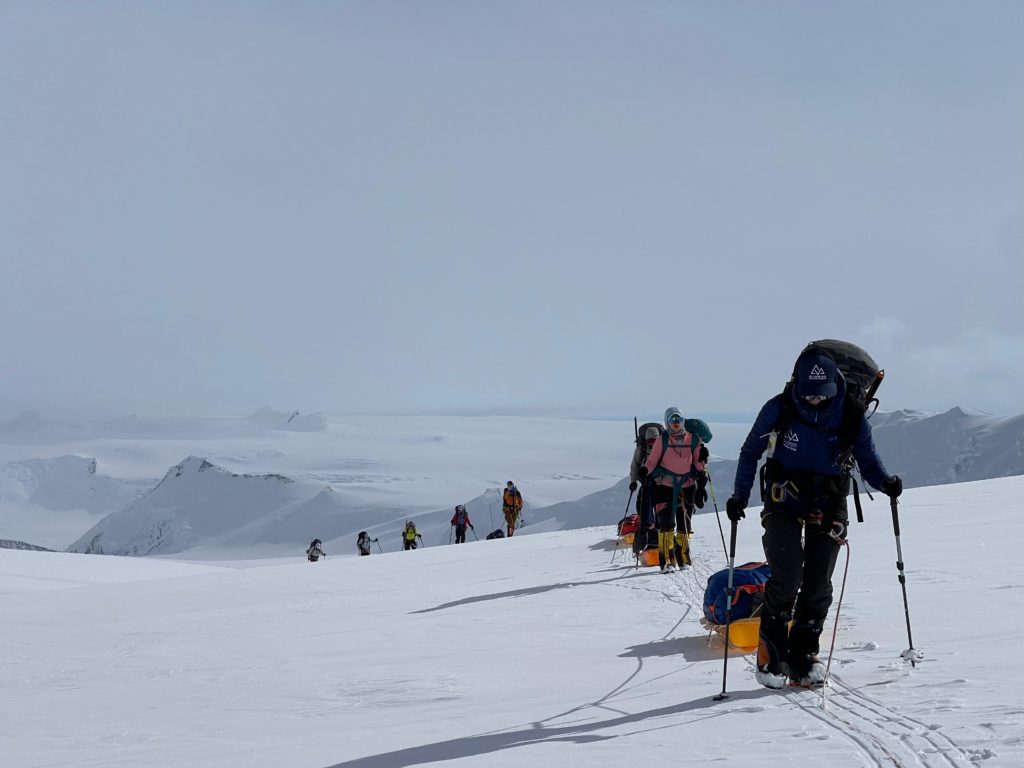
Vinson Team at Low Camp. Aconcagua underway
Our Vinson team are doing great! Guide Robert checked in via satellite to let us know they moved very strongly and with some pace up to Low Camp. Weather looks good through the 7th so they are planning to move to High Camp tomorrow (6th Jan) with a tentative summit plan of the 7th Jan.
Meanwhile our Private back to back Vinson/Aconcagua climber Anna is already at Plaza de Mulas base camp ready to tackle her second objective. They are moving strongly and feeling good. Tomorrow is a rest day before moving to the higher camps.
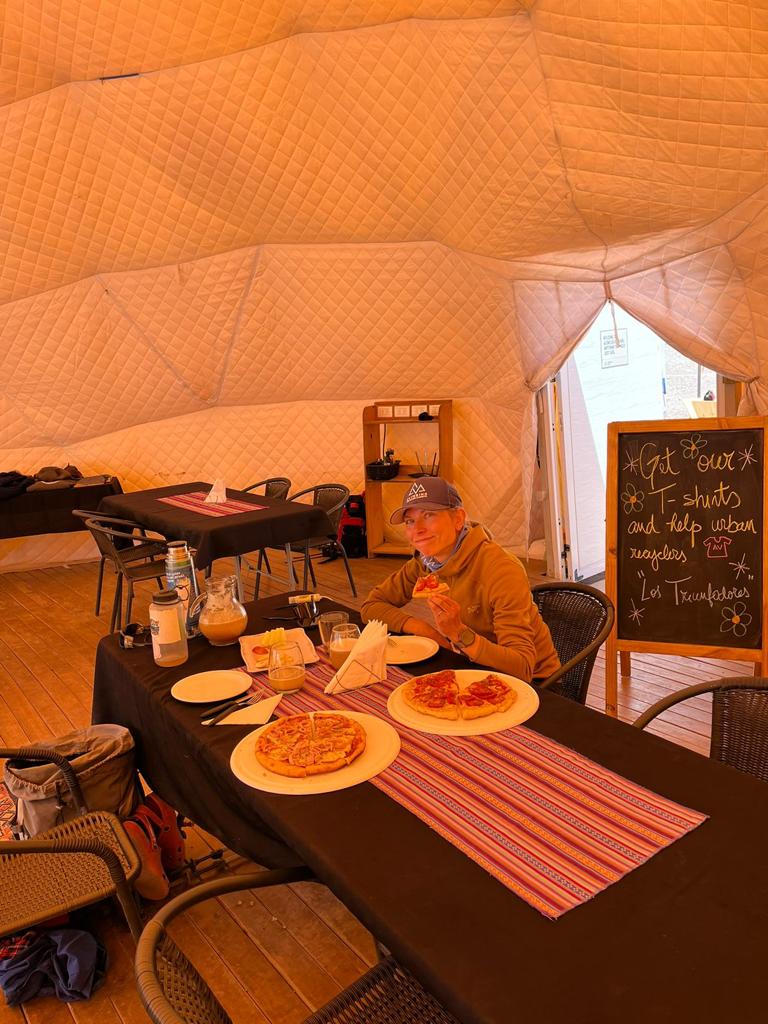
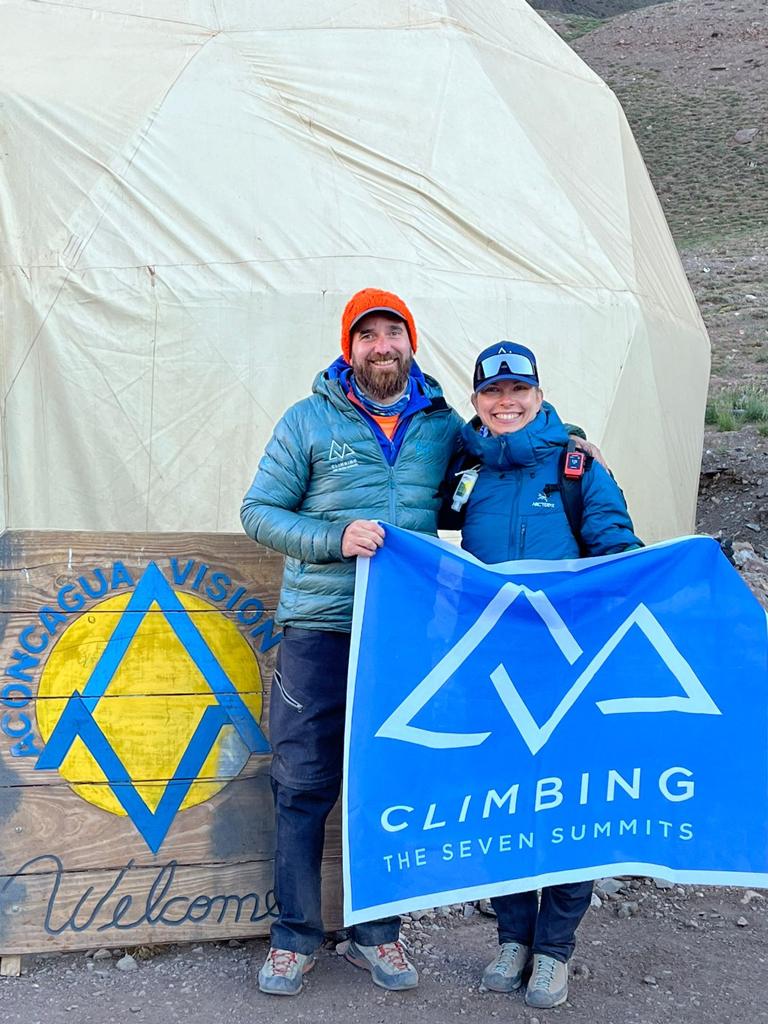
100% on top of Africa
Congratulations to;
Neil Bhandari
Ed Sokolnicki
Traci Marin
Sam Schwerin
Emma Schwerin
Maria Albuja
Adwait Tare
Alongside Guide Tendi Sherpa & Gerry for toping out on Kilimanjaro at 7:30am this morning! They had great weather and climbed strong before descending to Millennium Camp safely. Today they will finish their descend and head back to Arusha where we will wave farewell to our Climb Only climbers and the rest of the team head out on a celebratory safari!

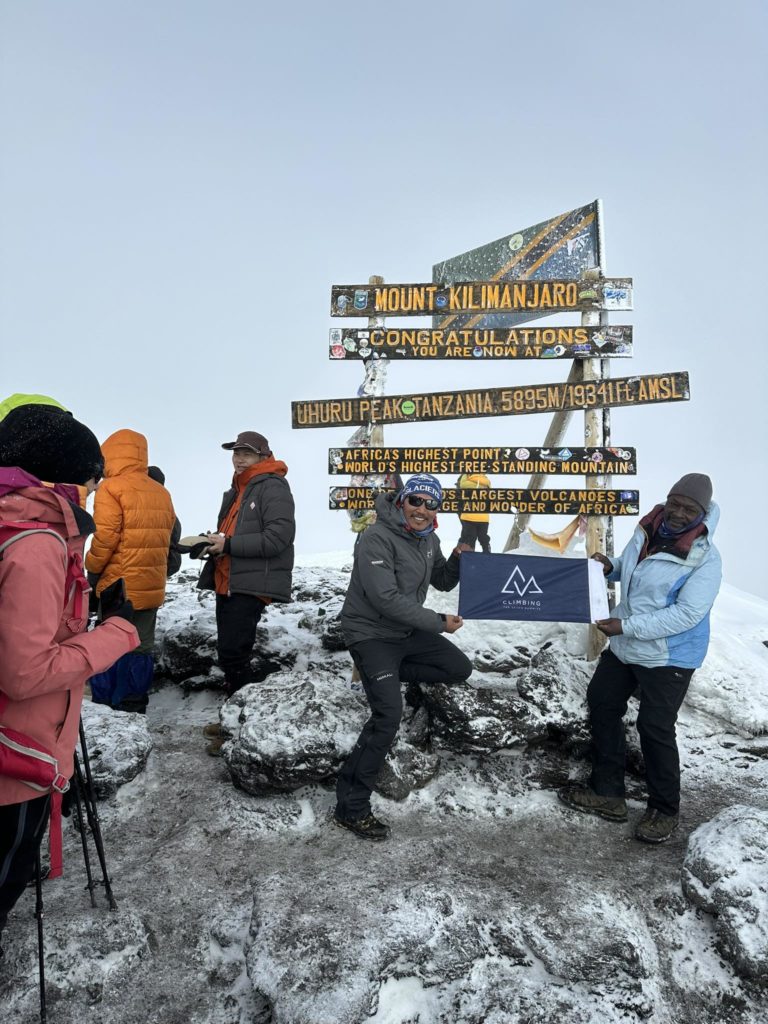
Kili Team Readies for the Summit & other MTN News
Day 5 on Kili : Our Kili team are cozy in Karanga Camp resting up and readying for their summit bids. They have been eating well and will be in bed early, to get up at midnight to begin their climb. Guides Tendi & Gerry report, everyone is feeling strong and have been climbing well. A little rain tonight but clear forecast in the morning. We are wishing them well on their journey to the roof of Africa.
On Aconcagua: Our teams hit Base Camp and trekked out and are back to Mendoza after a huge adventure. They'll be shortly on their way home. Meanwhile our private Vinson/Aconcagua climber Anna K who is doing the back to back climbs, arrived in Puenta del Inca and trekking to Confluencia today.
On Vinson: The team reached Vinson Base Camp, and we have good weather forecast for the next few days. Yesterday they did some sled and fixed rope training in the afternoon and the plan is to leave camp around noon today and head up to Low Camp.
Kili Photos from Guide Tendi:

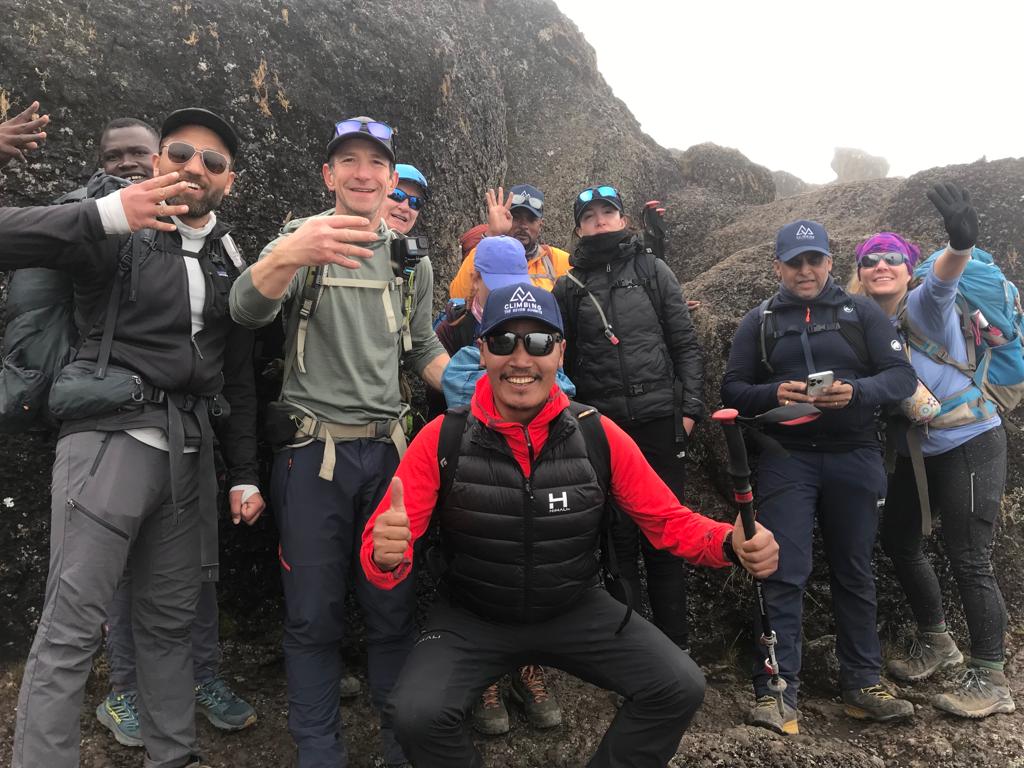
Aconcagua Photos from Guide Nani:
